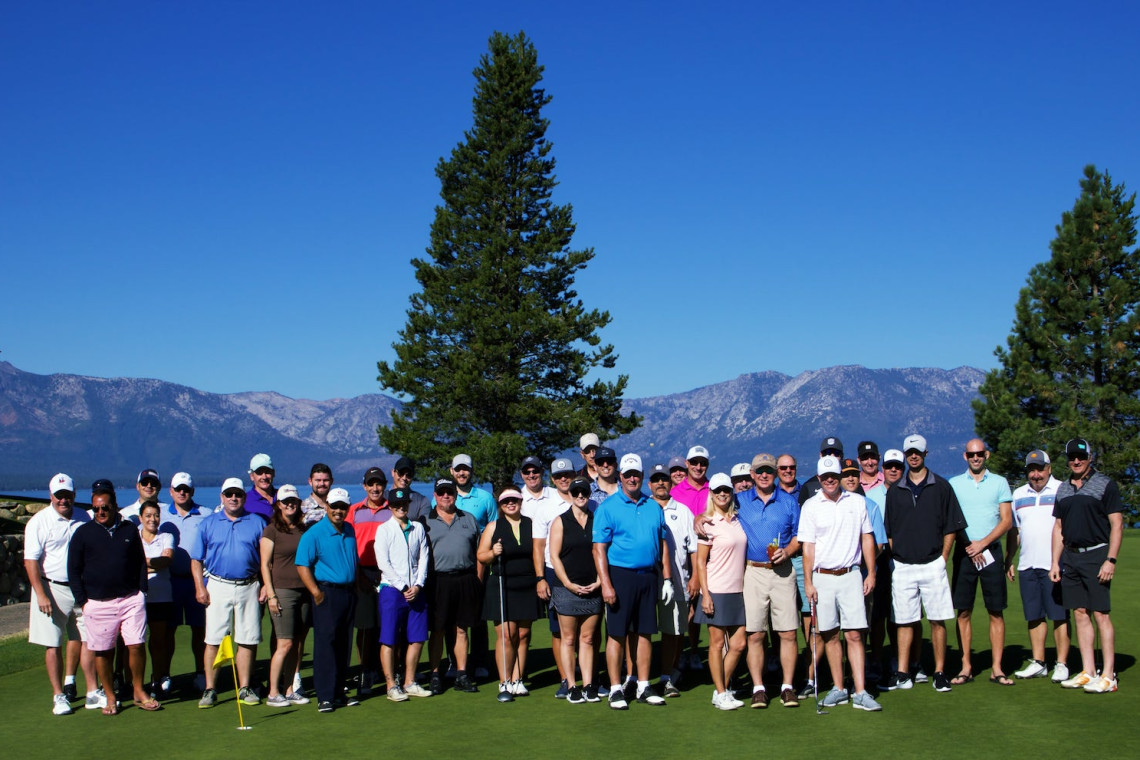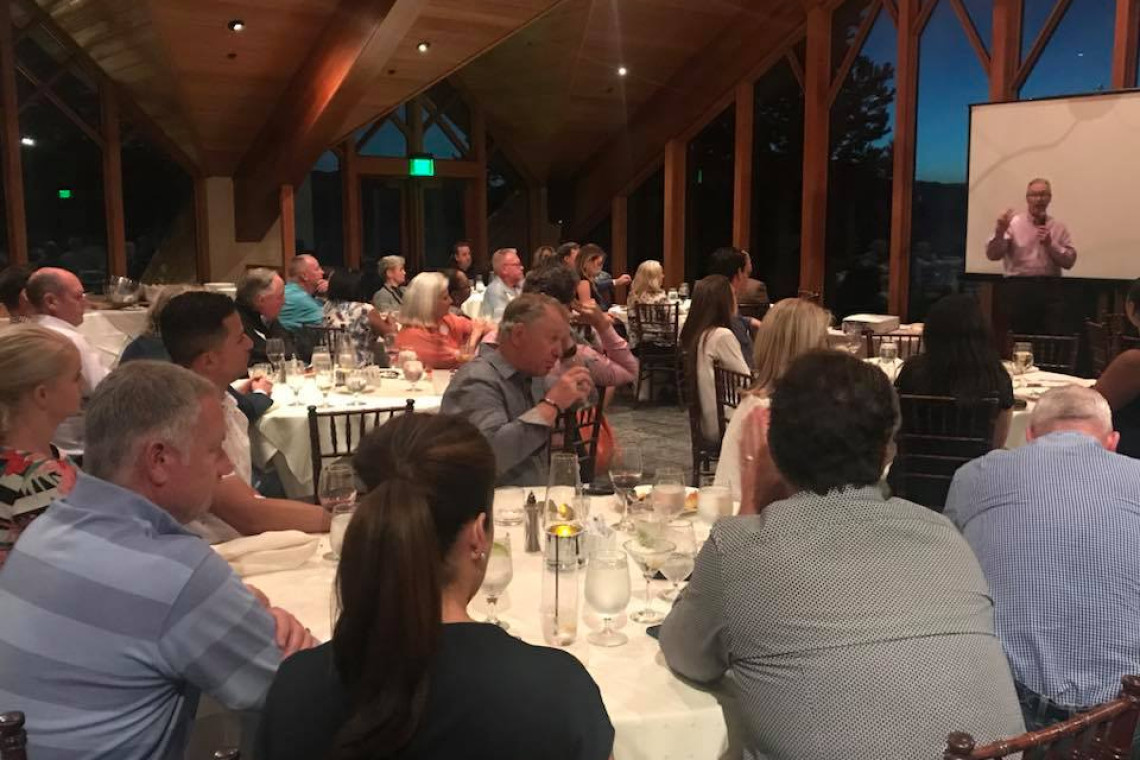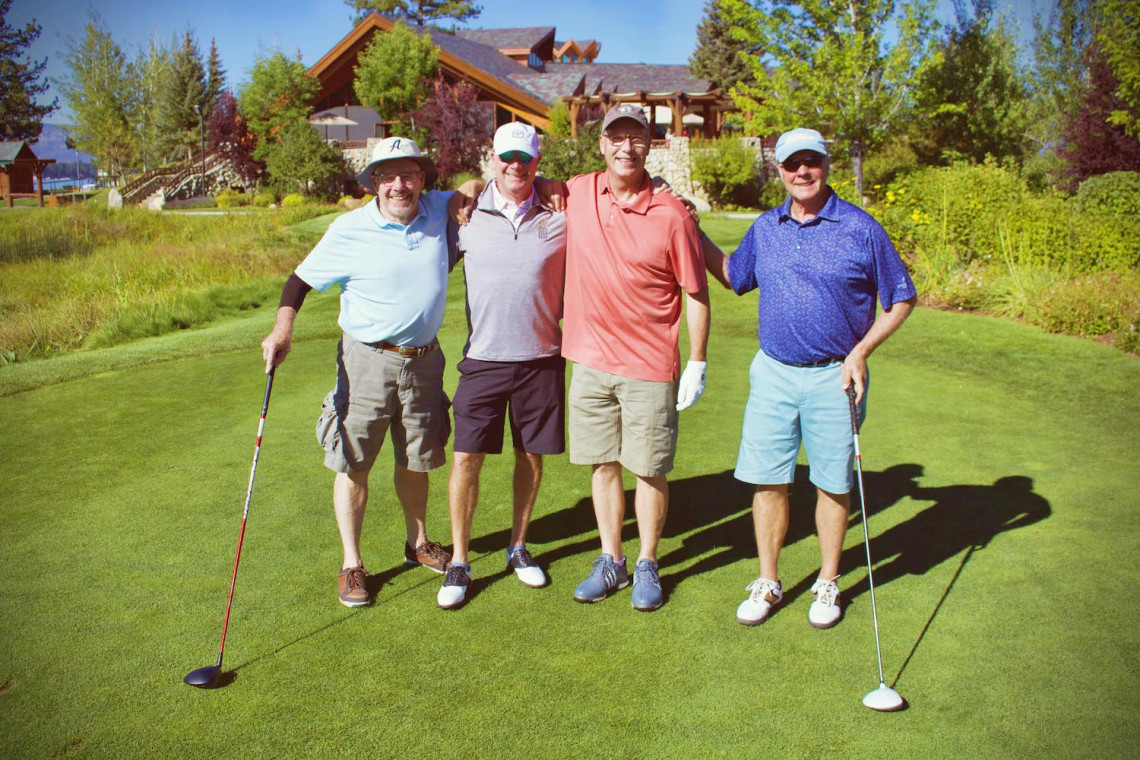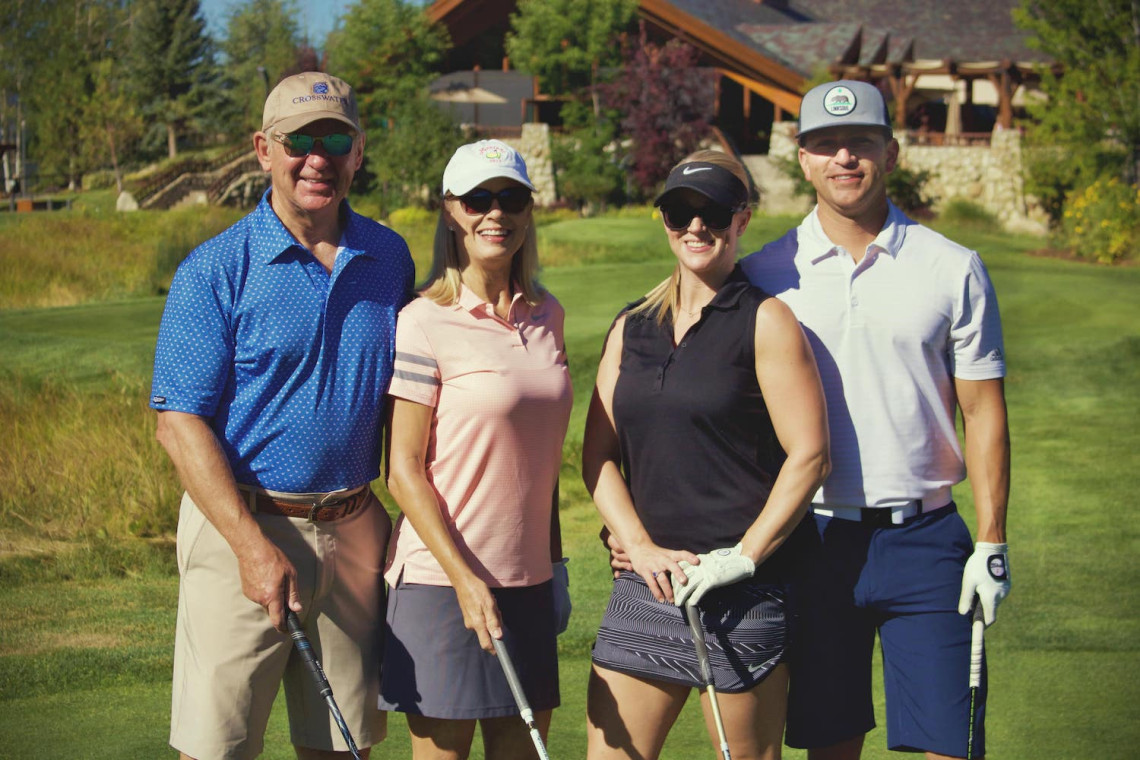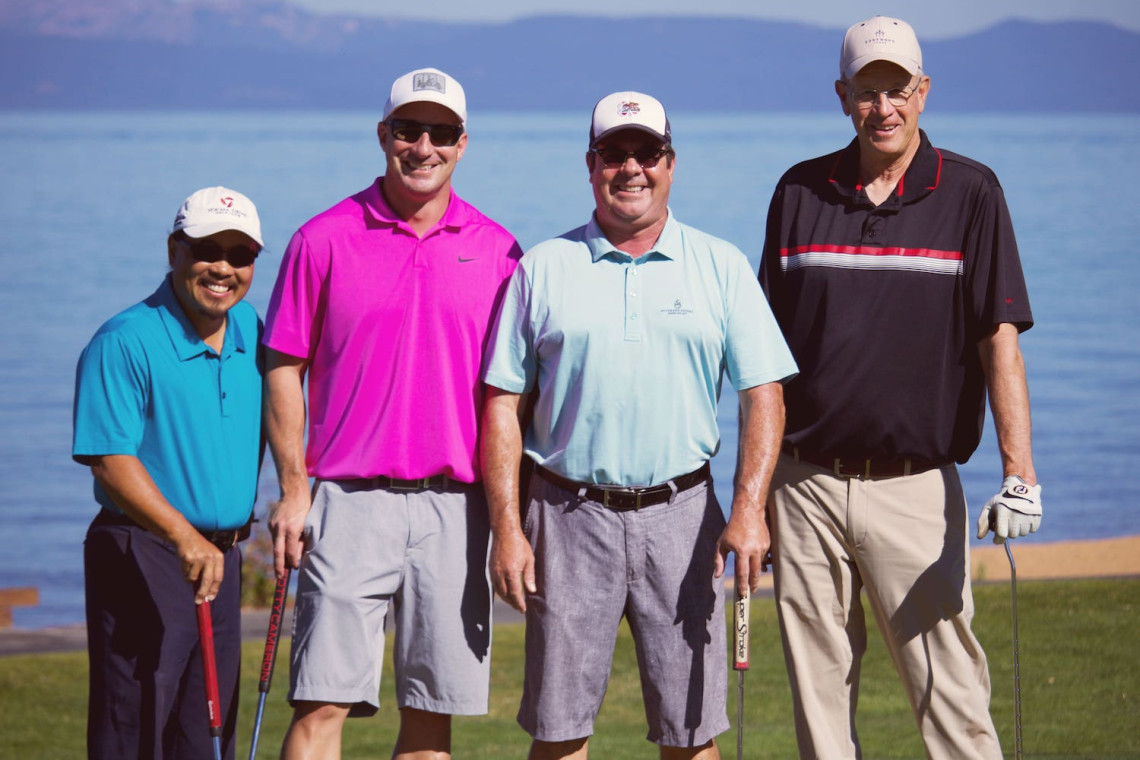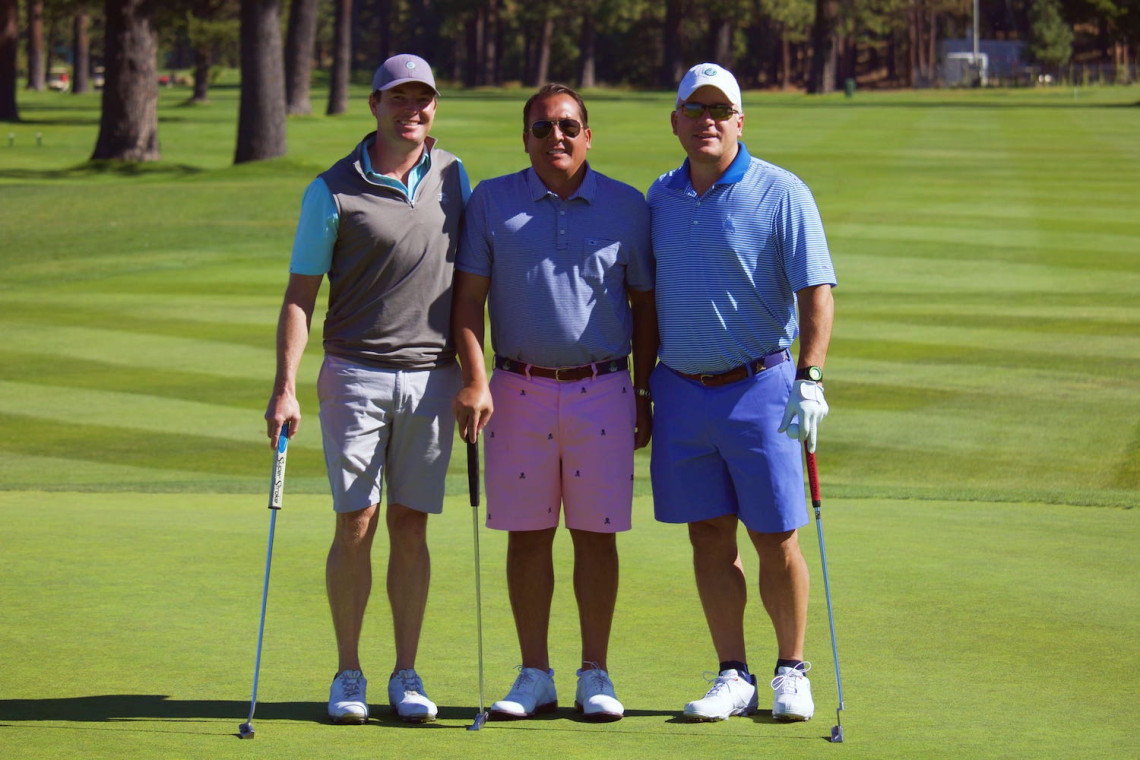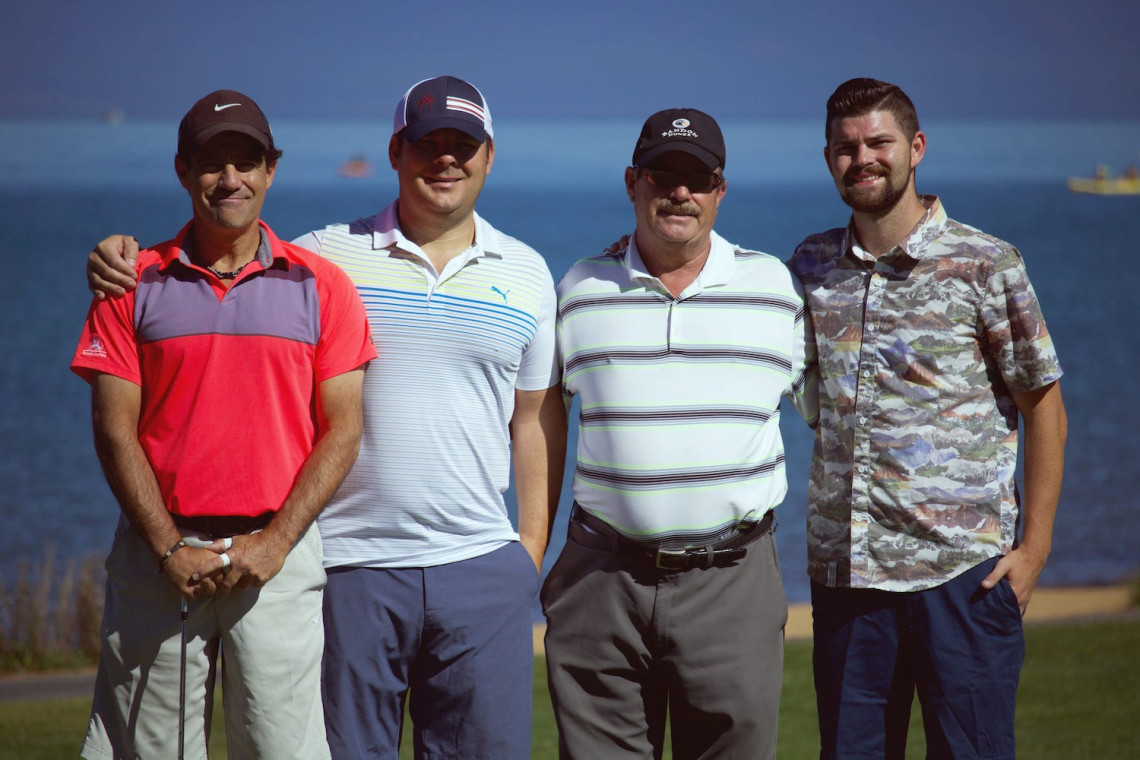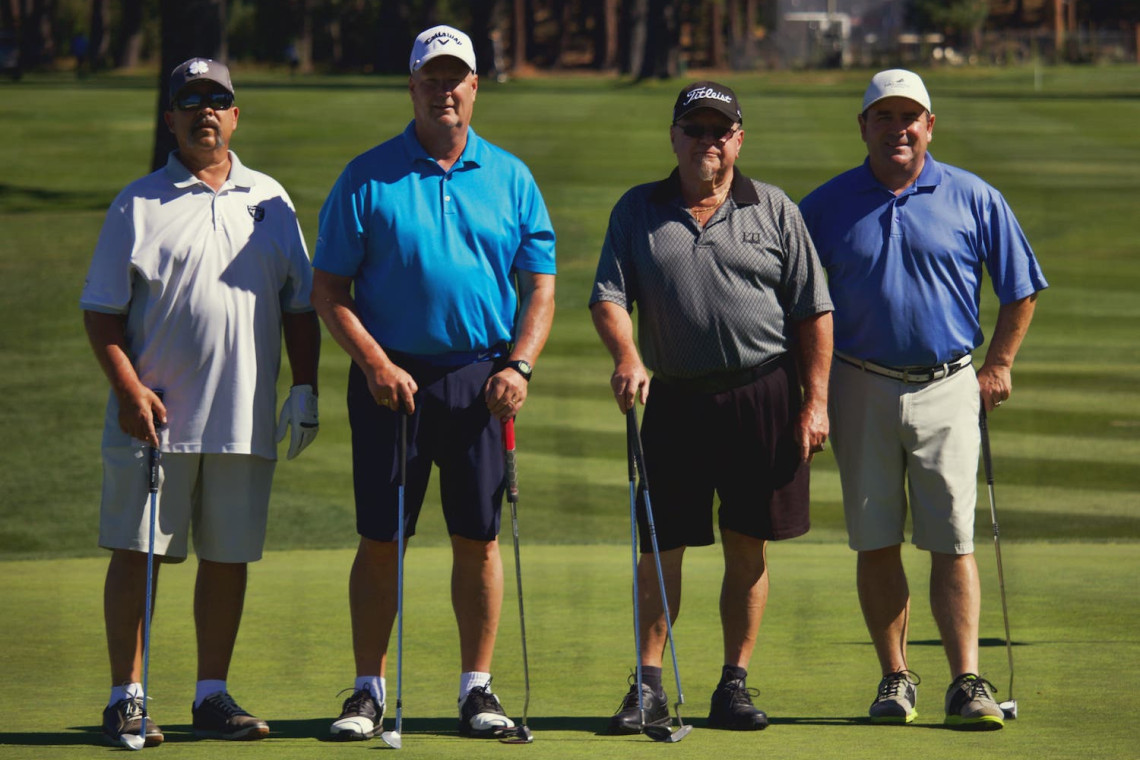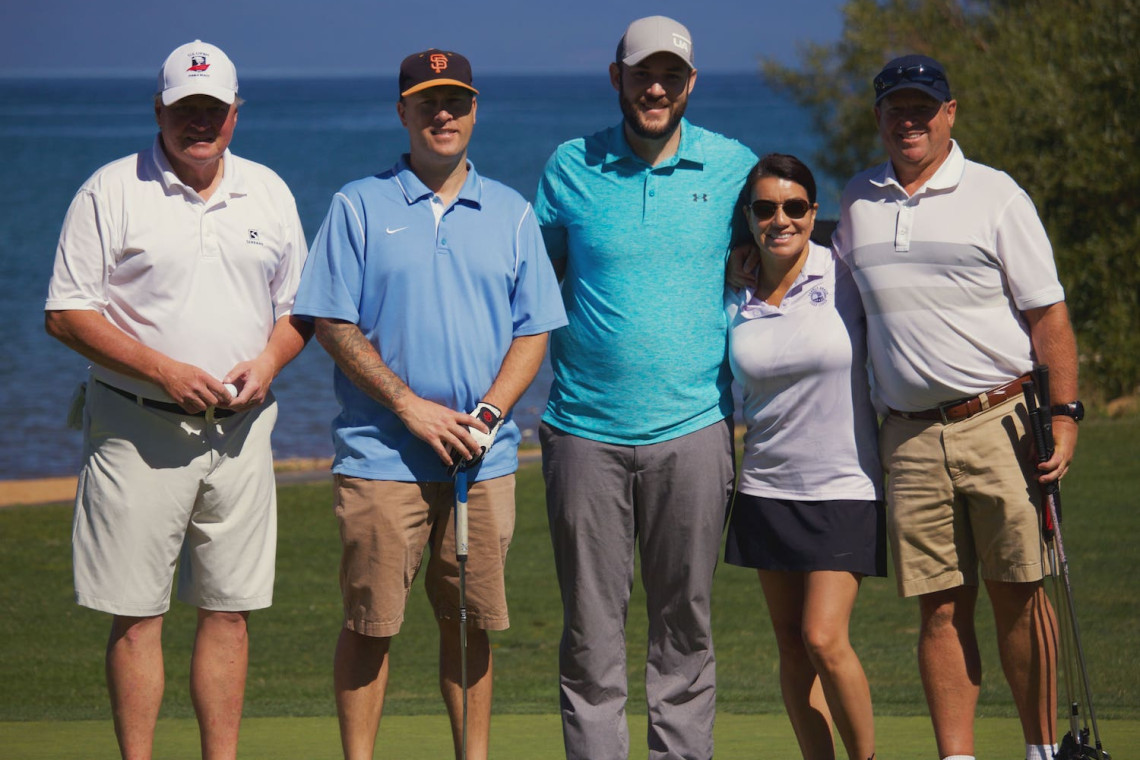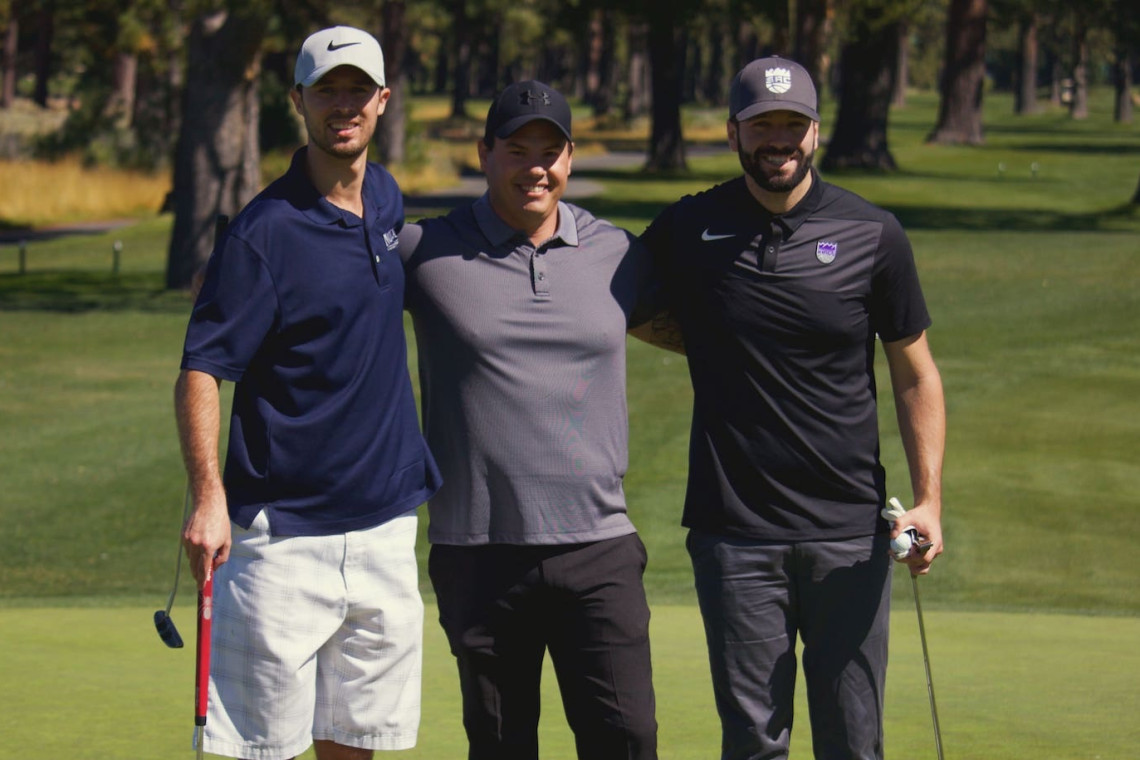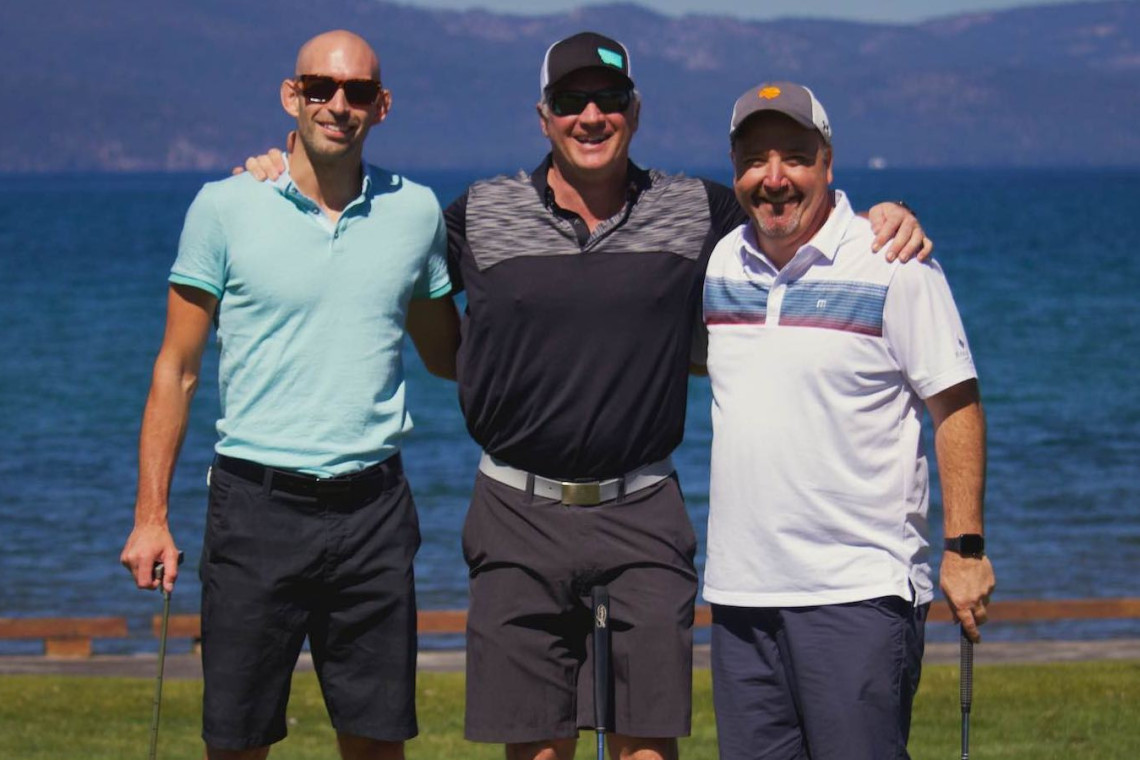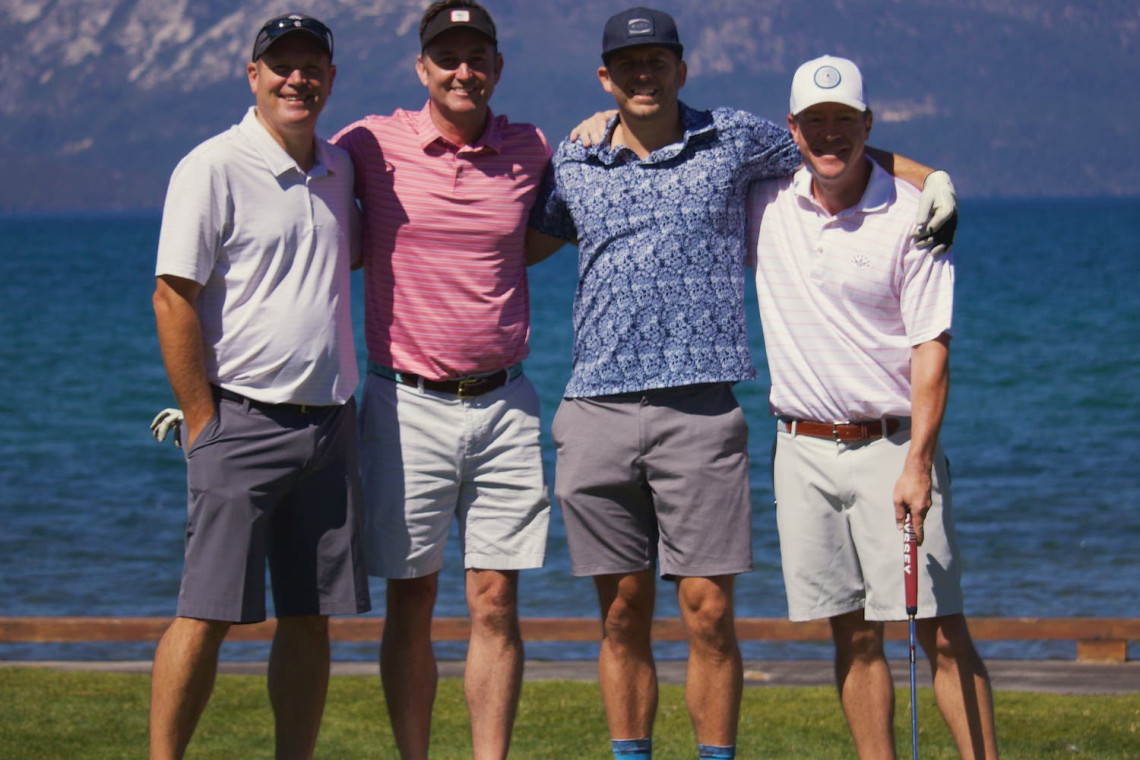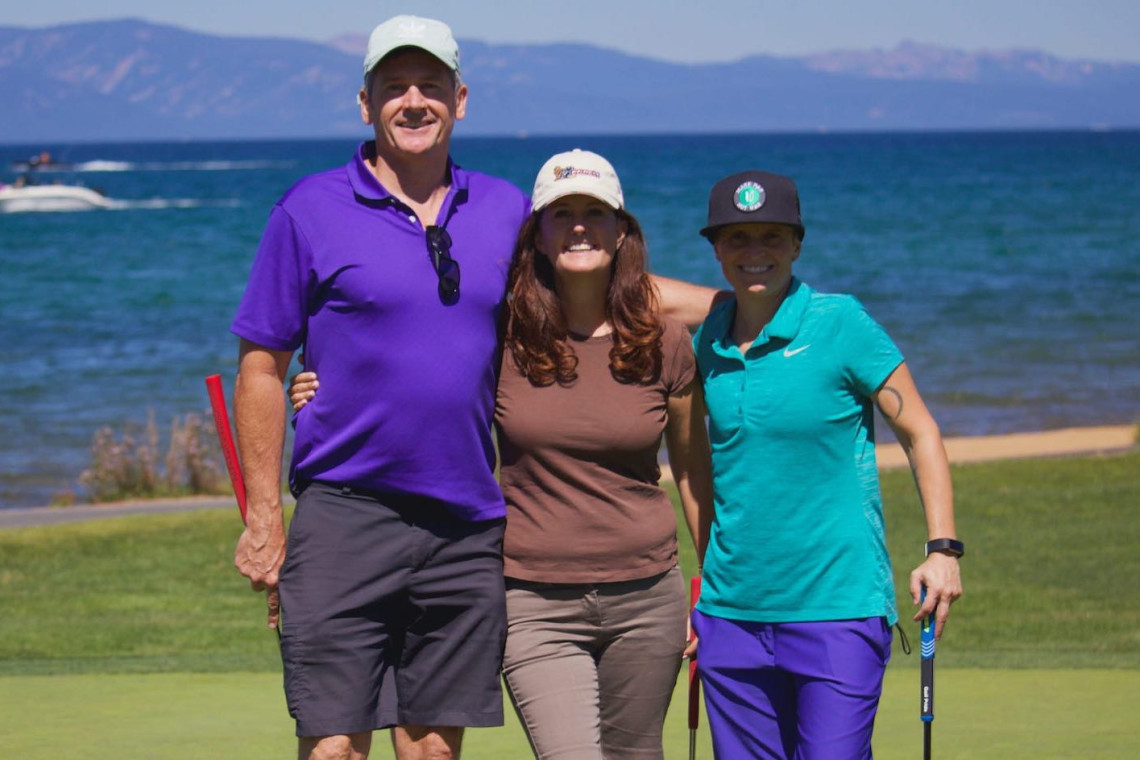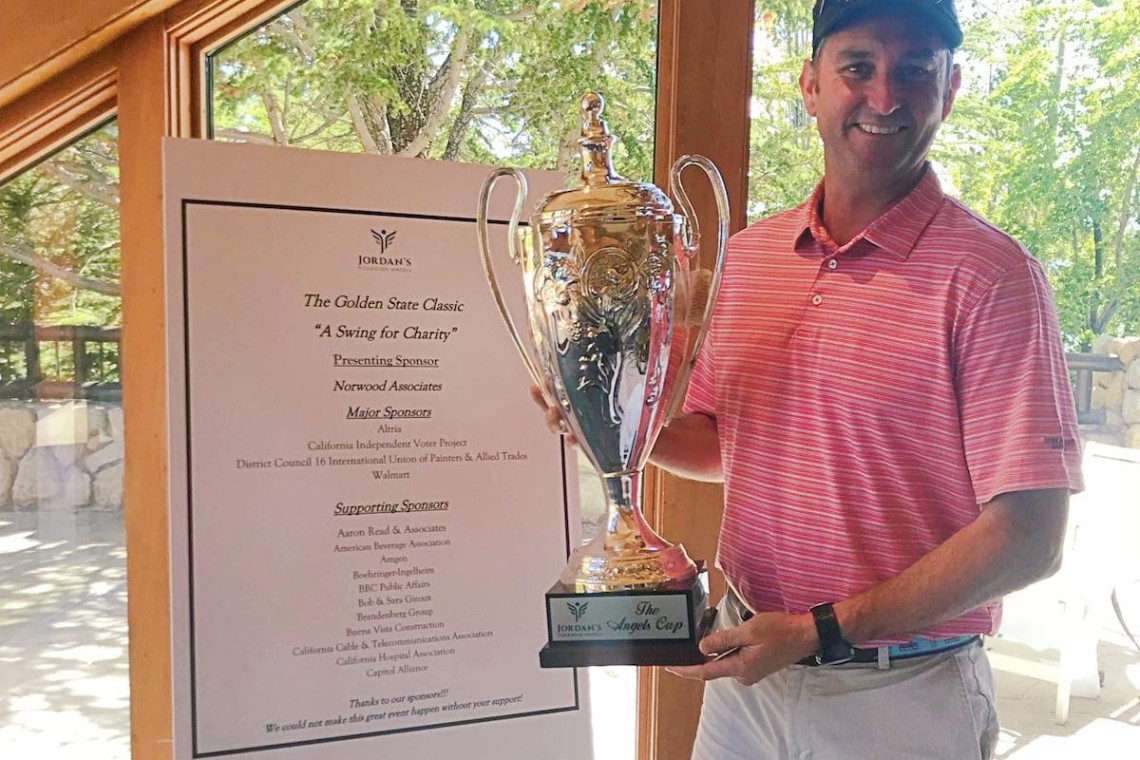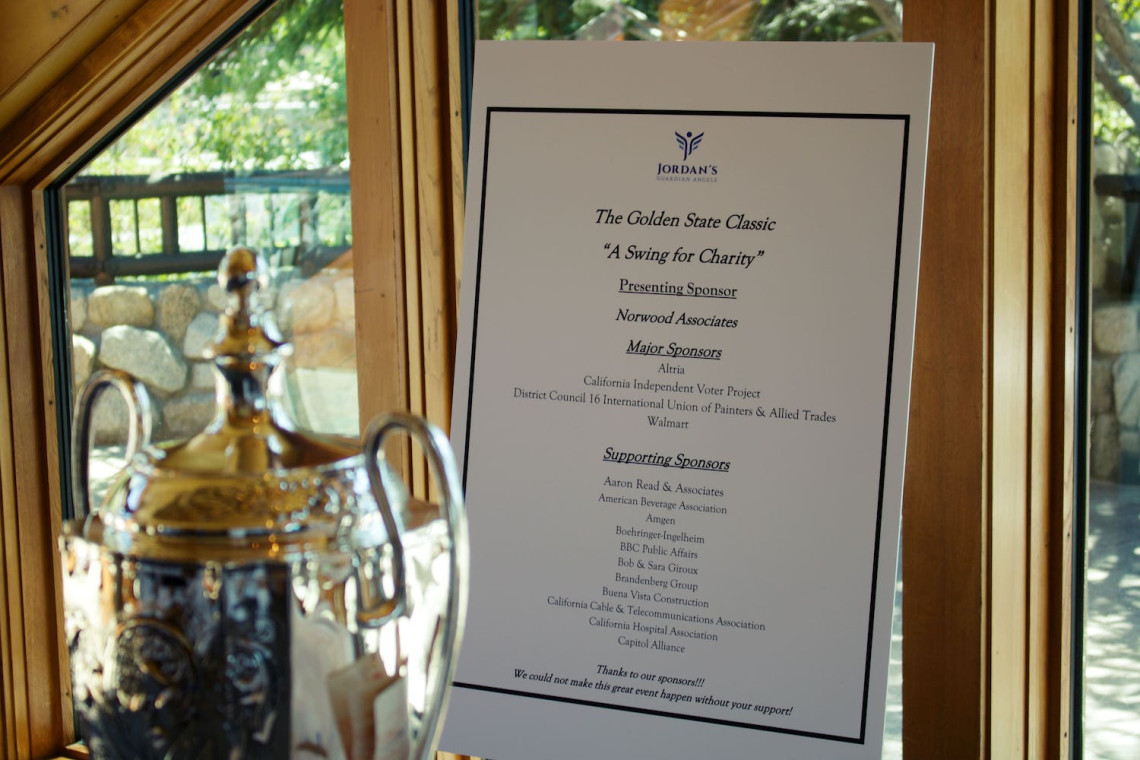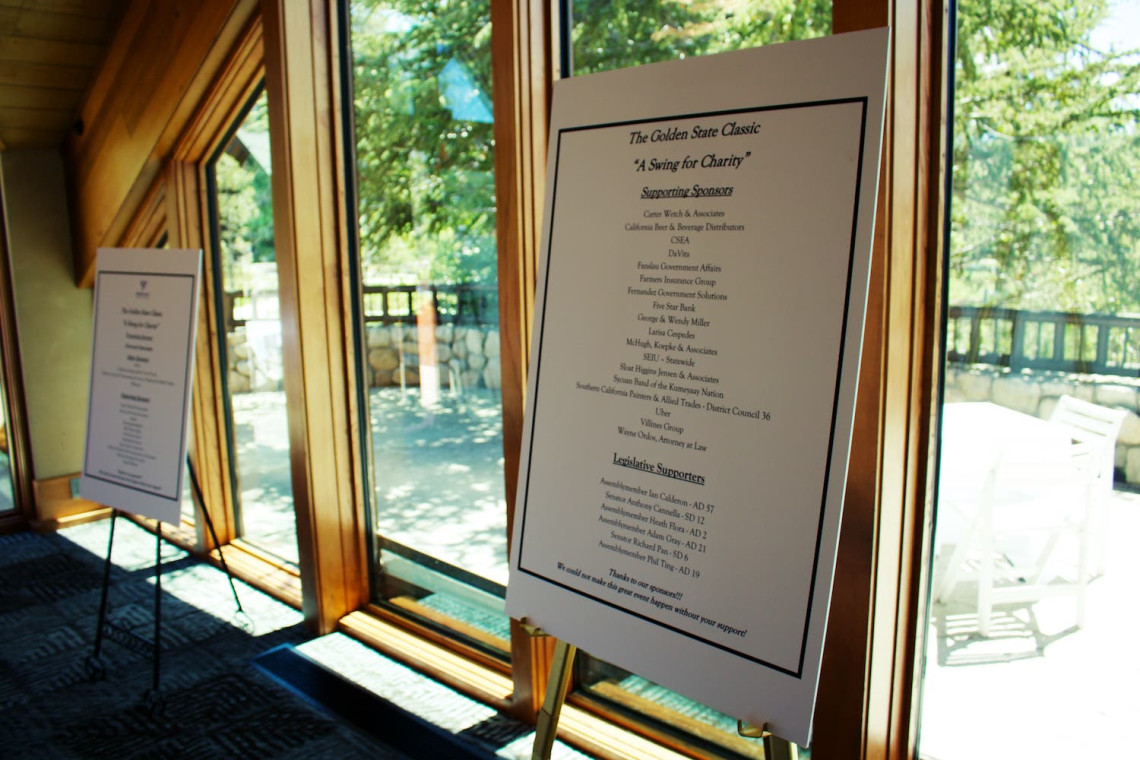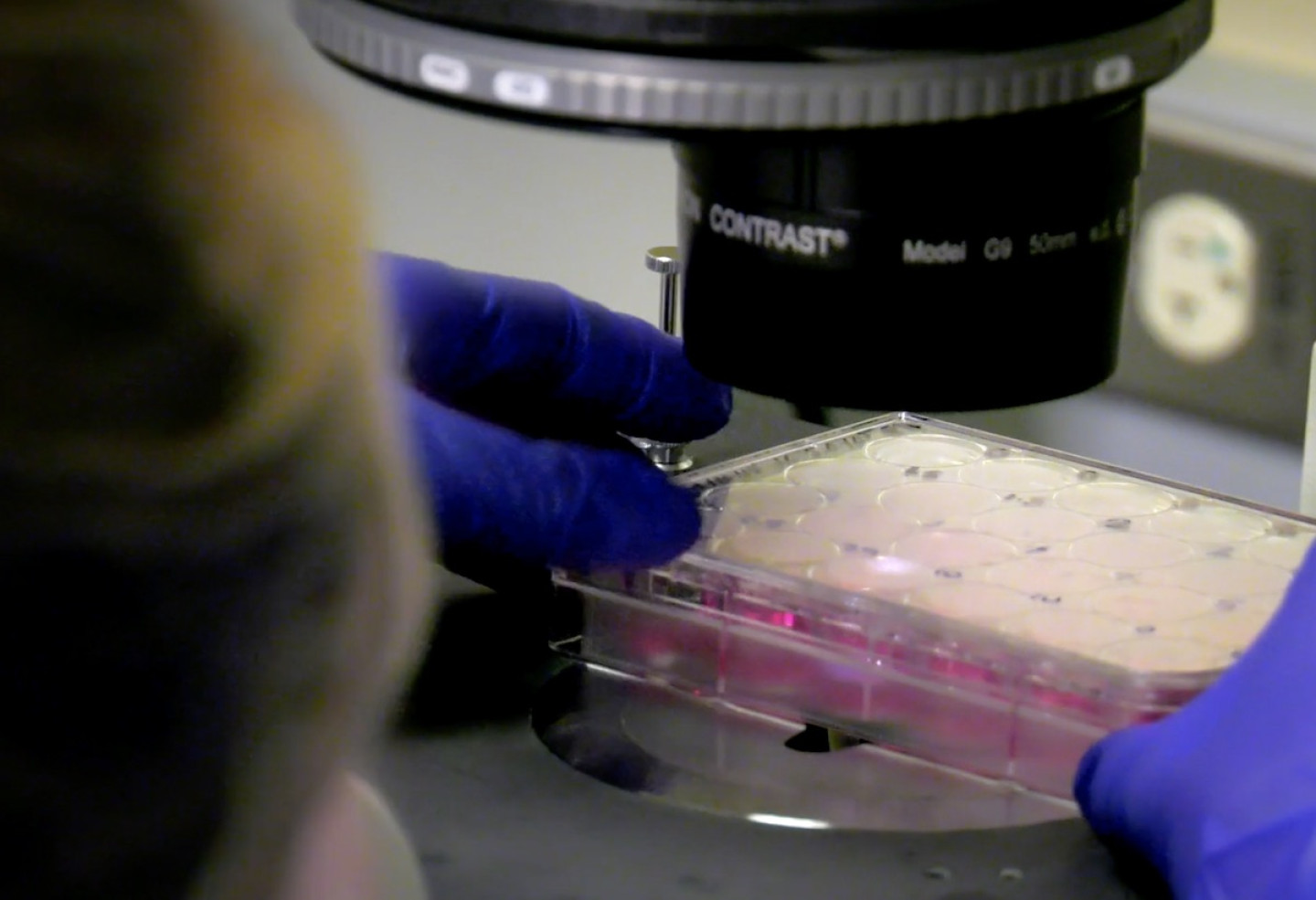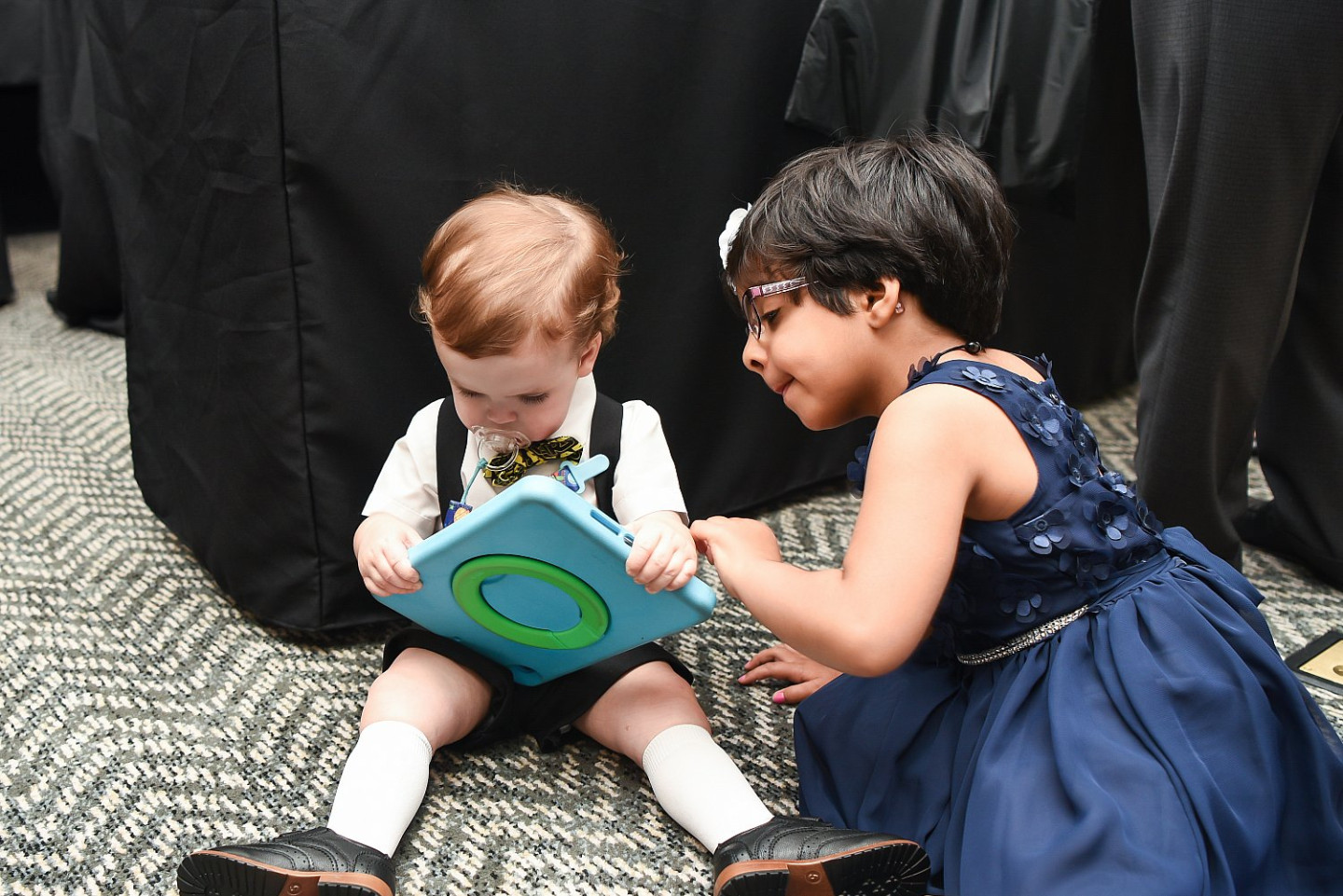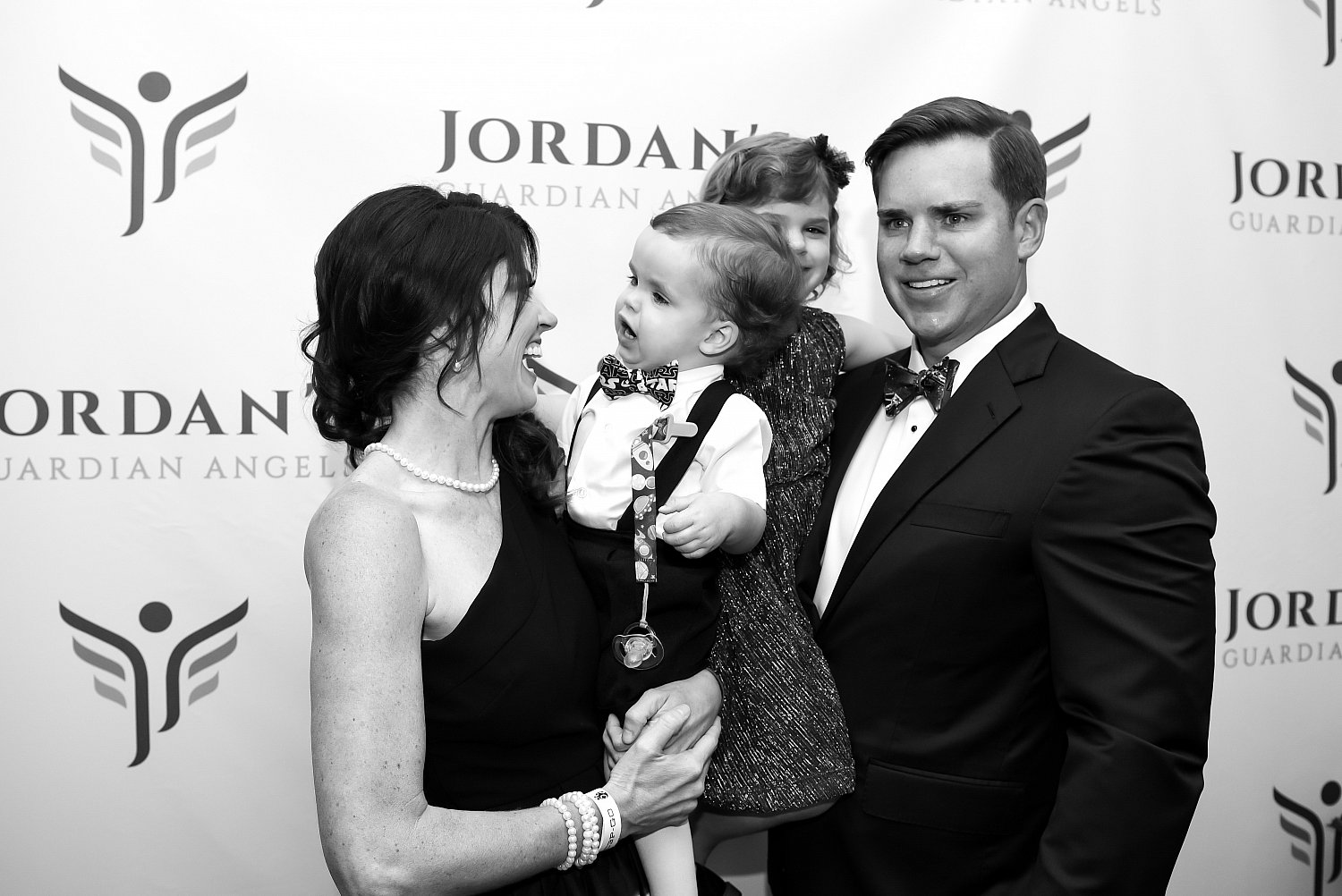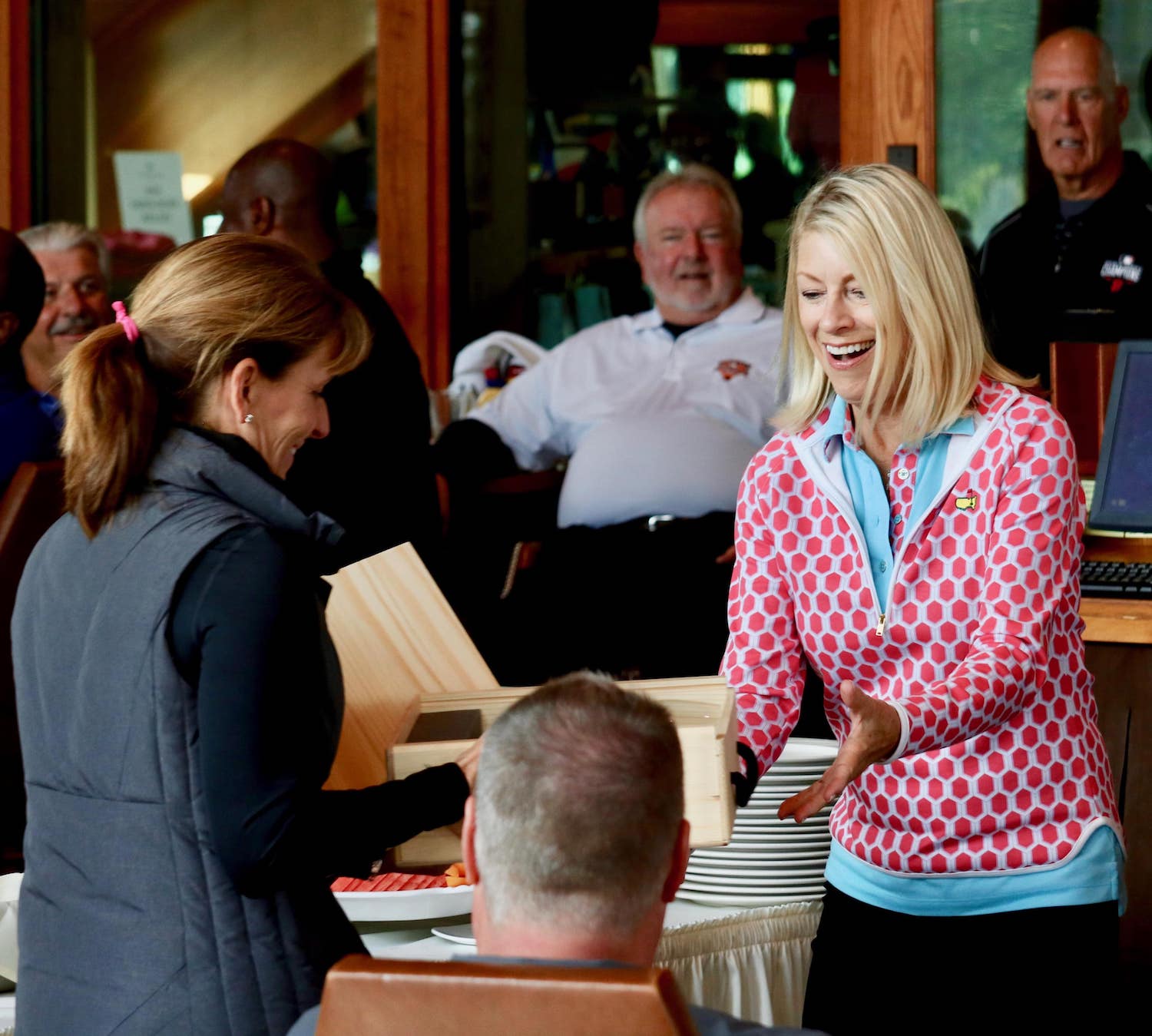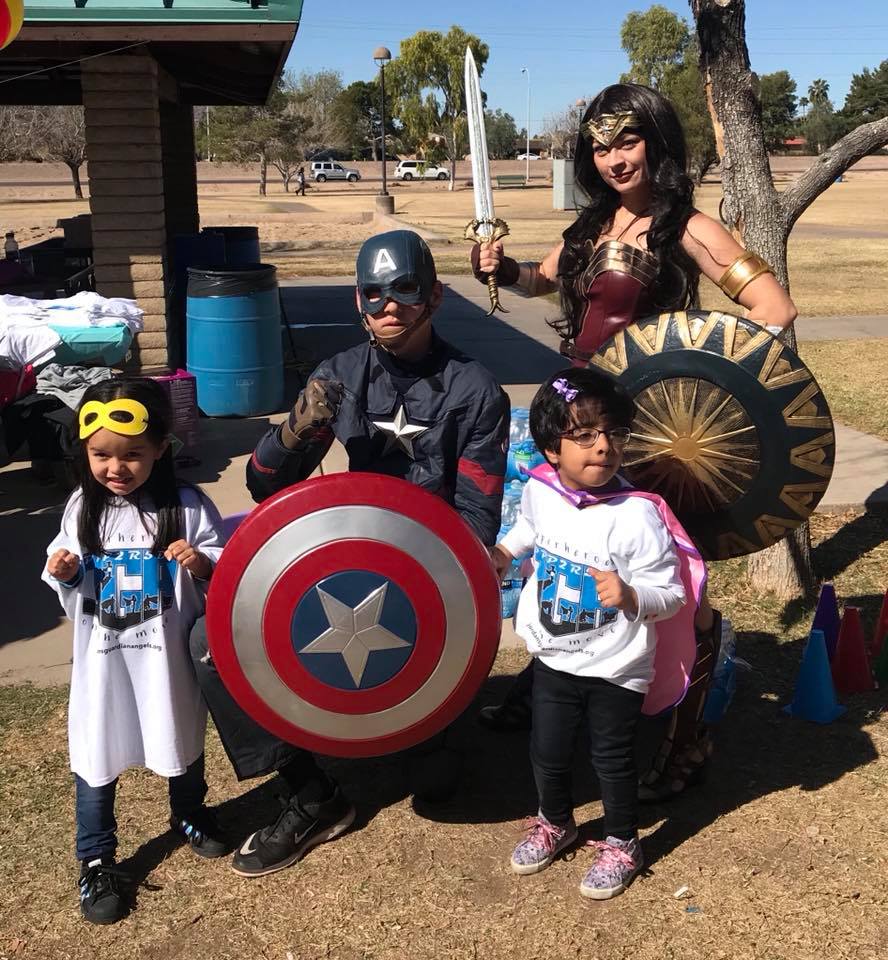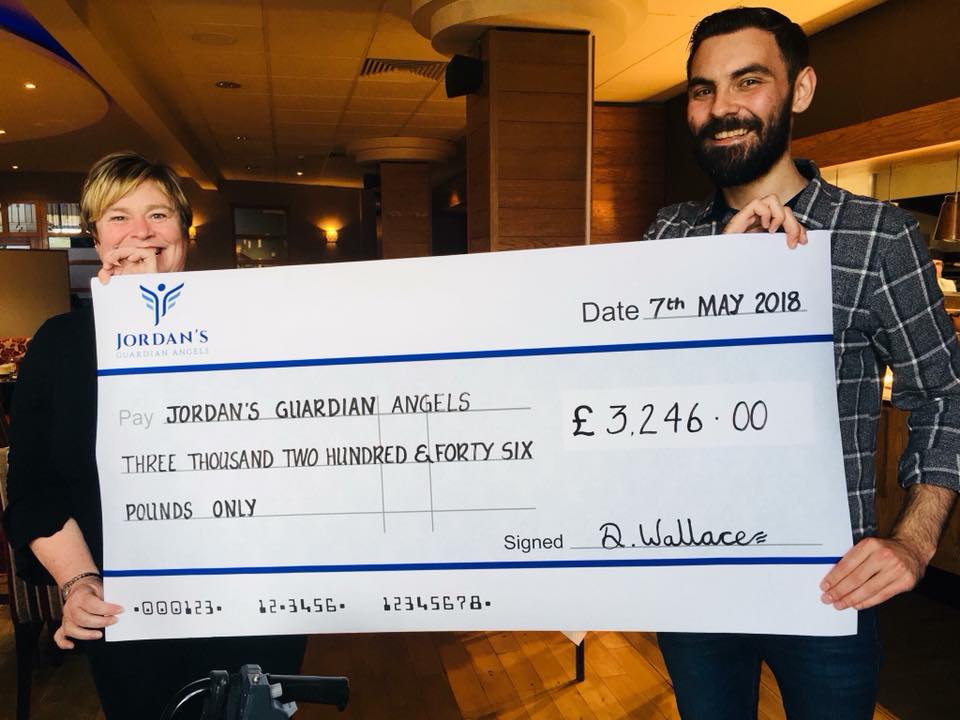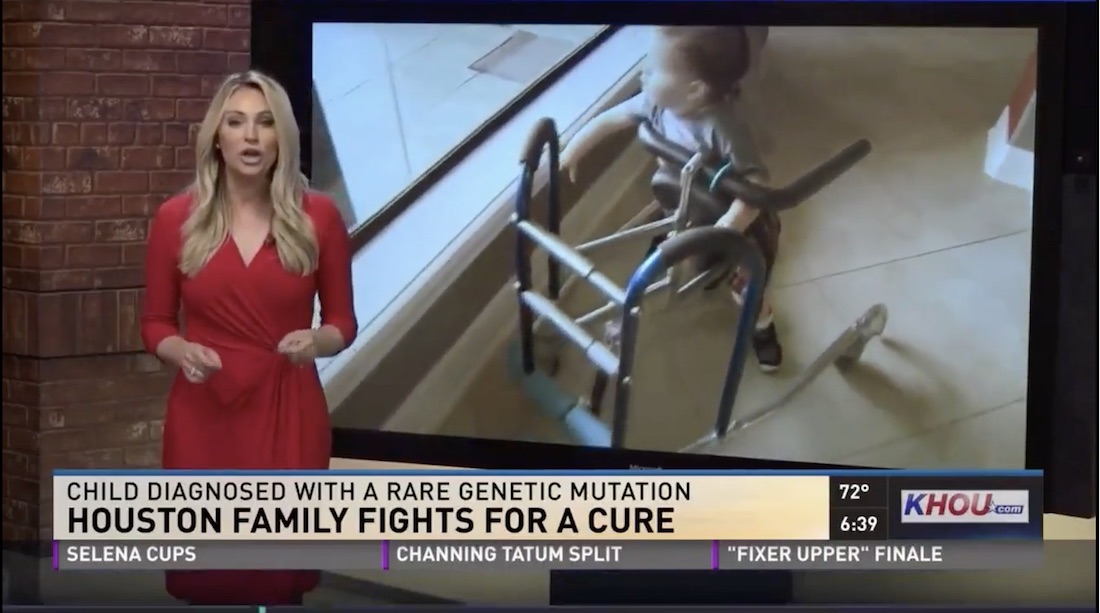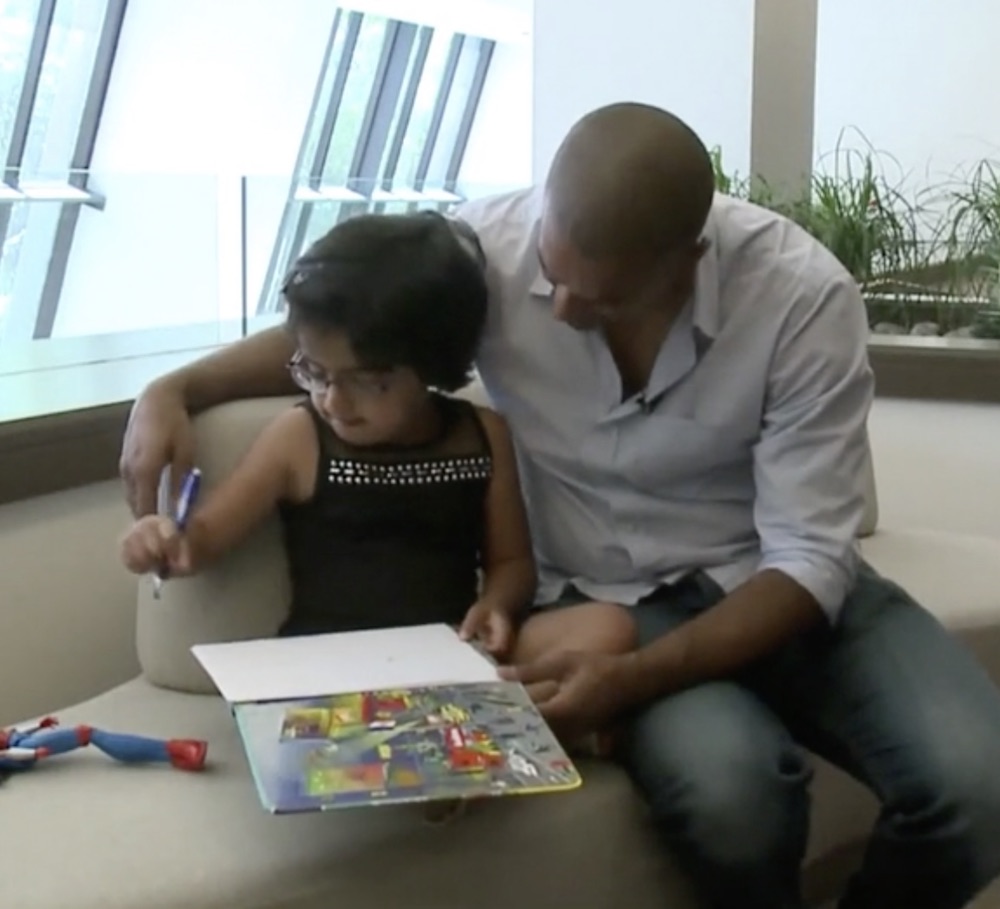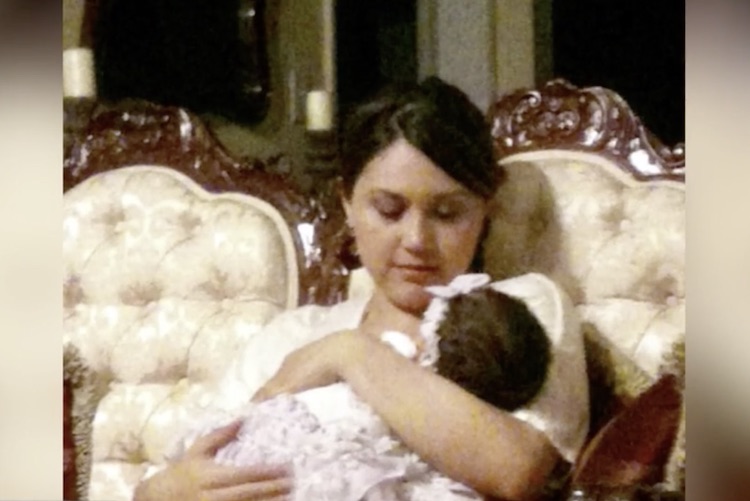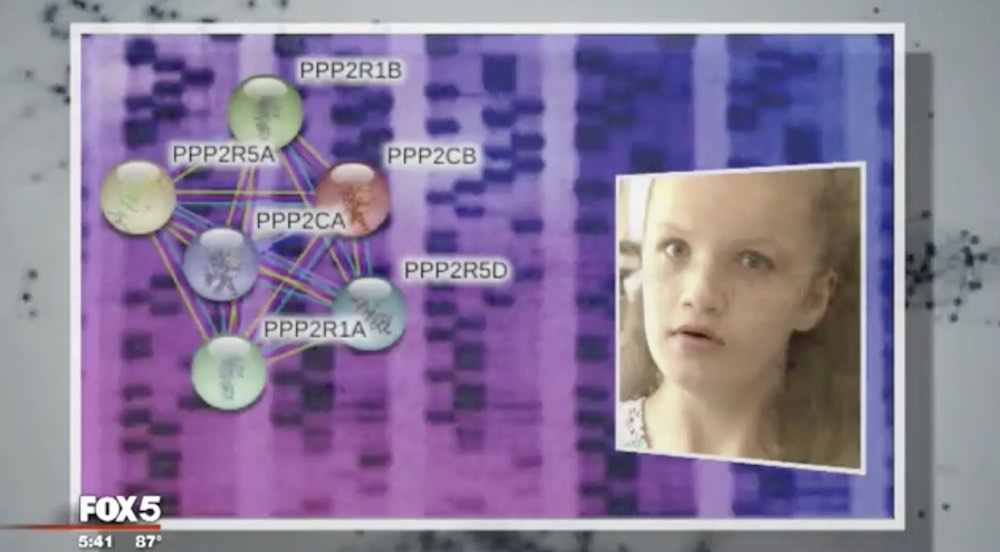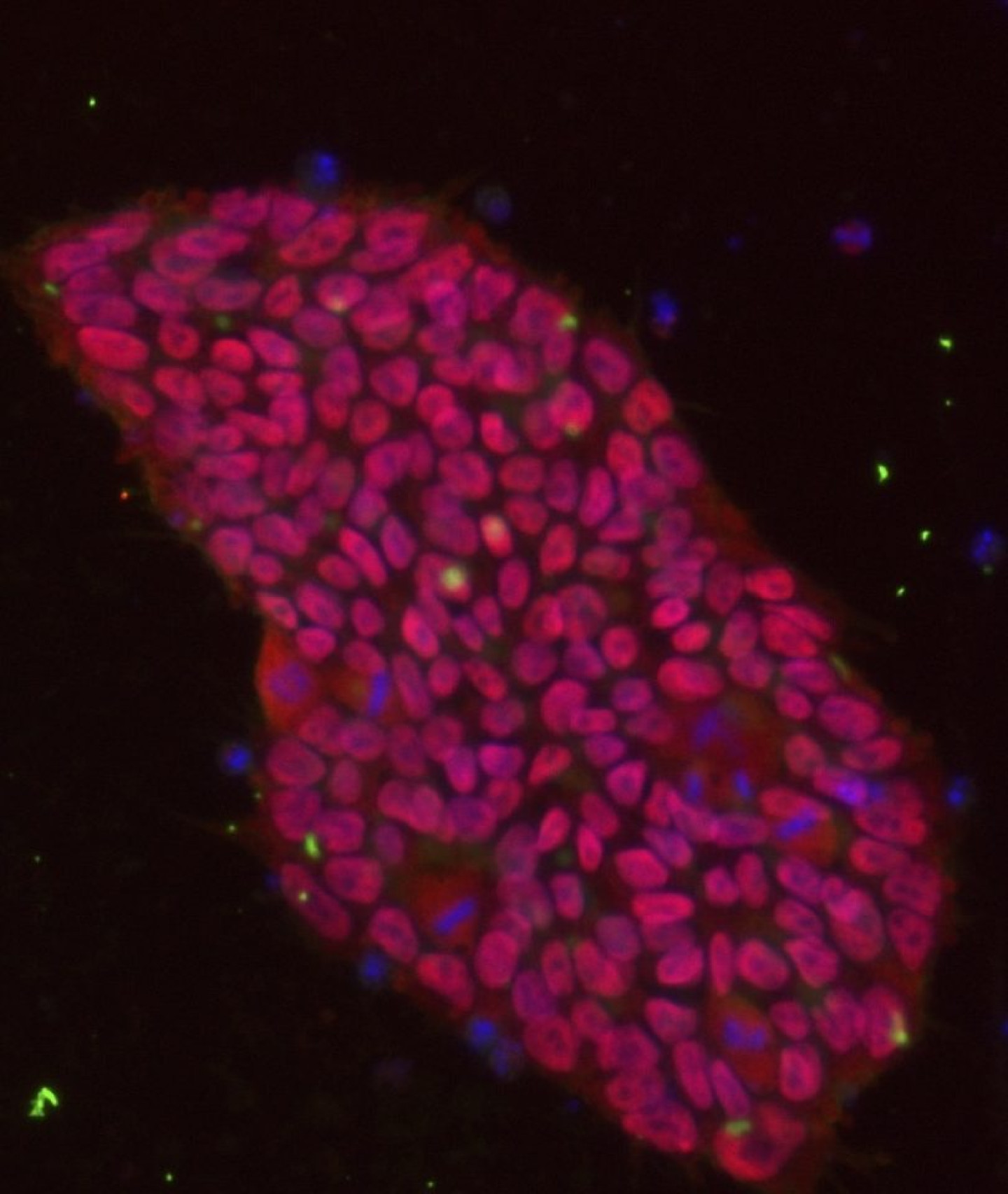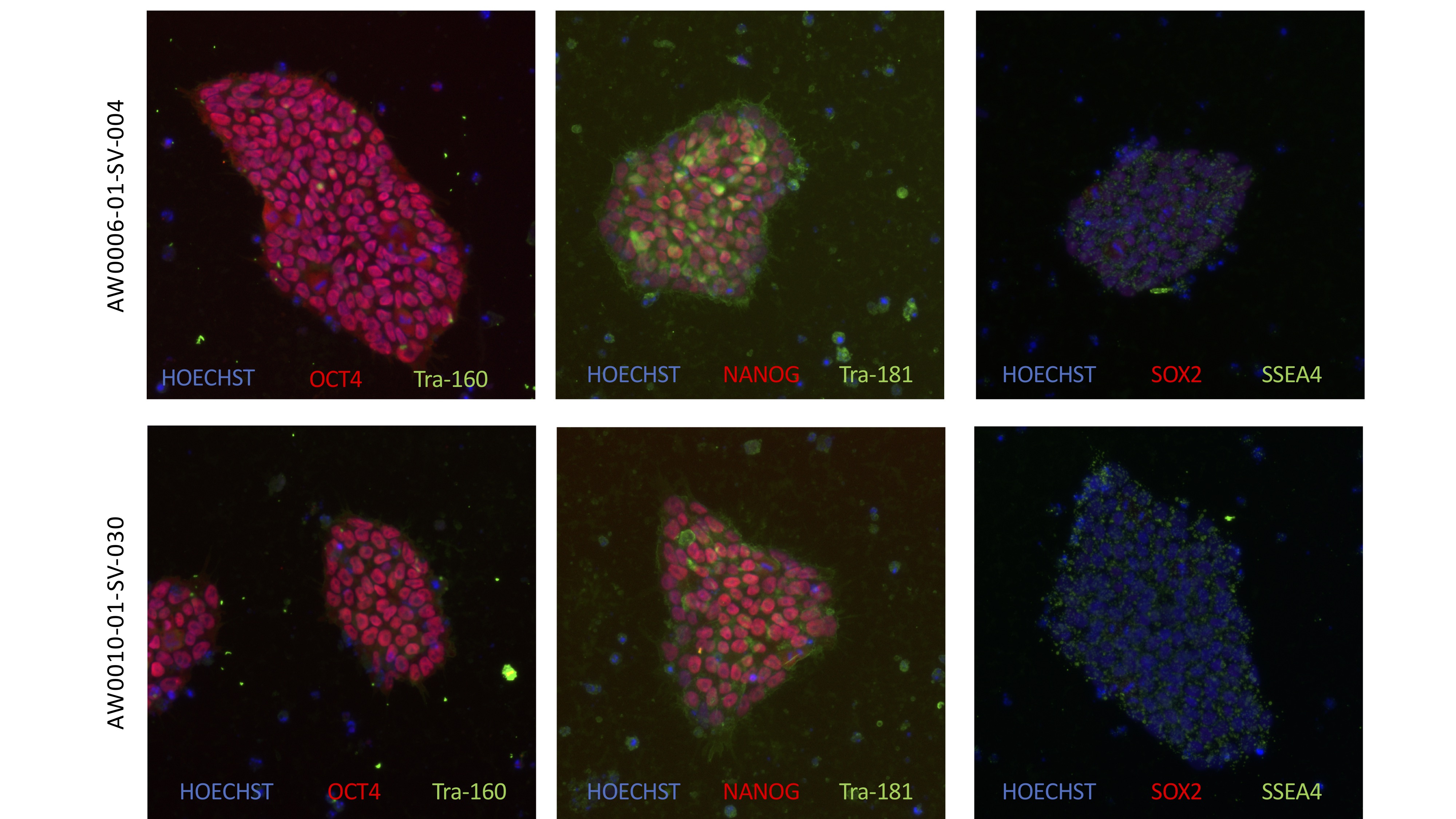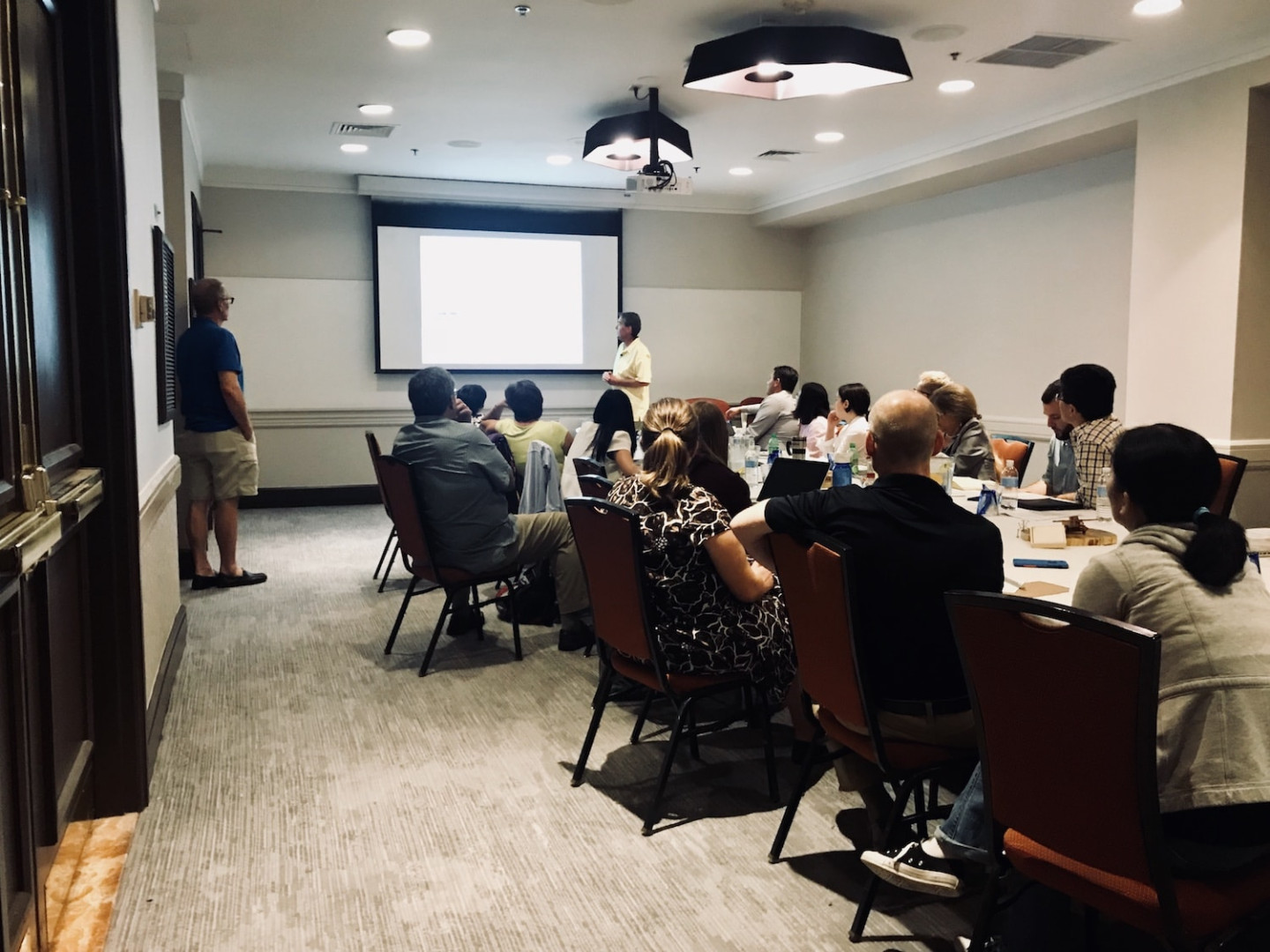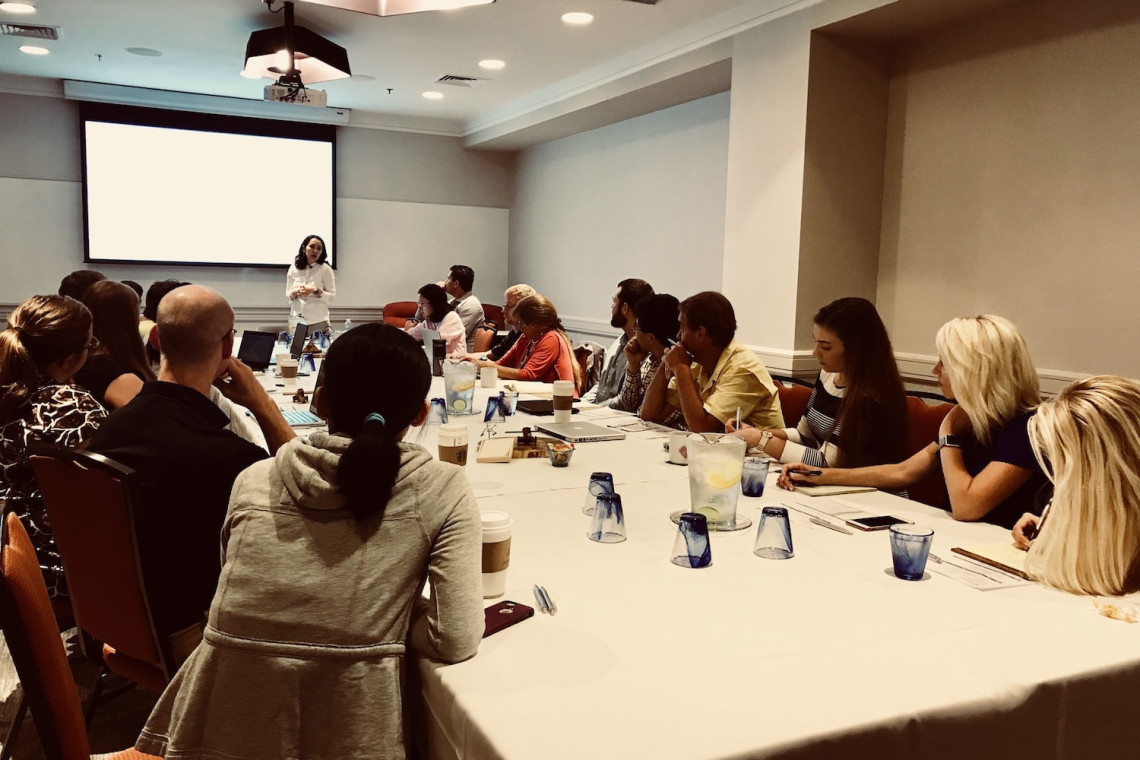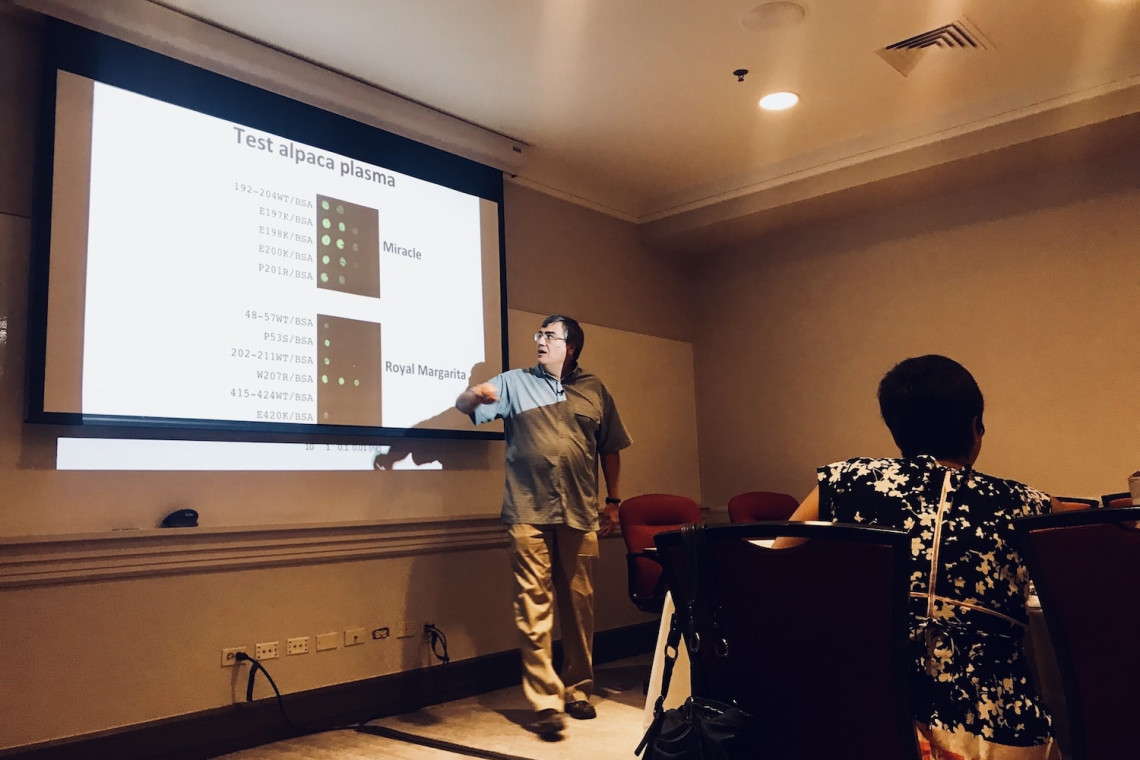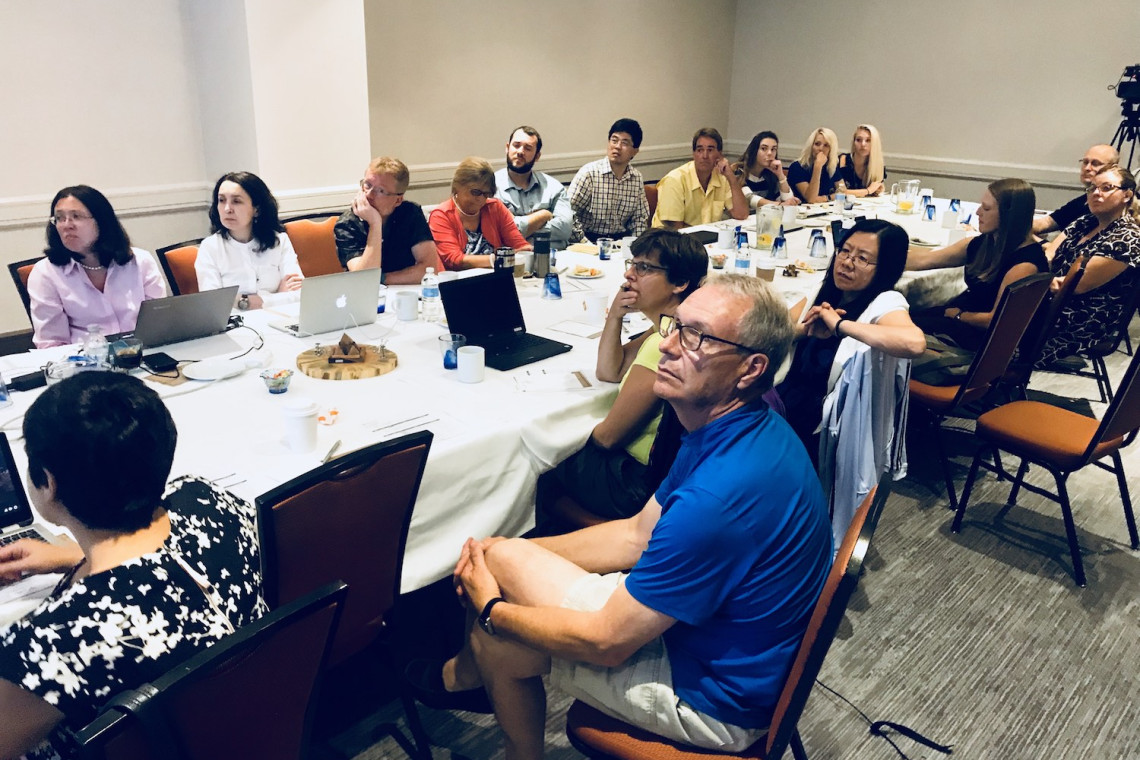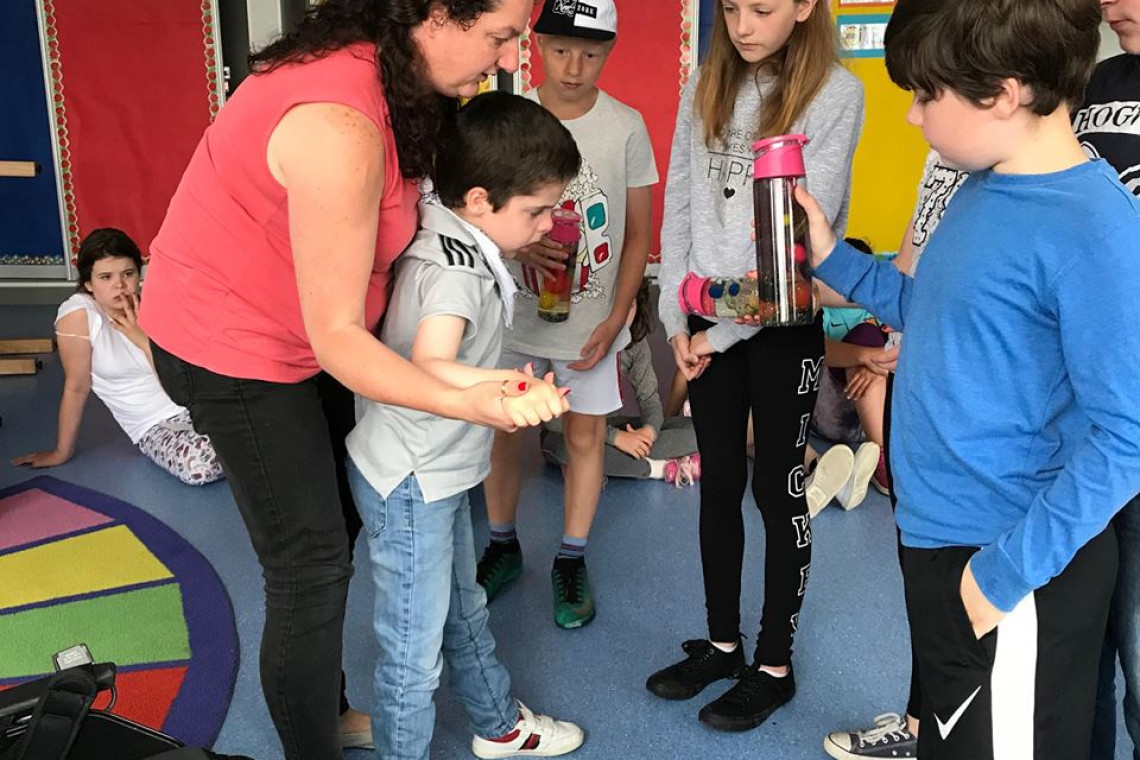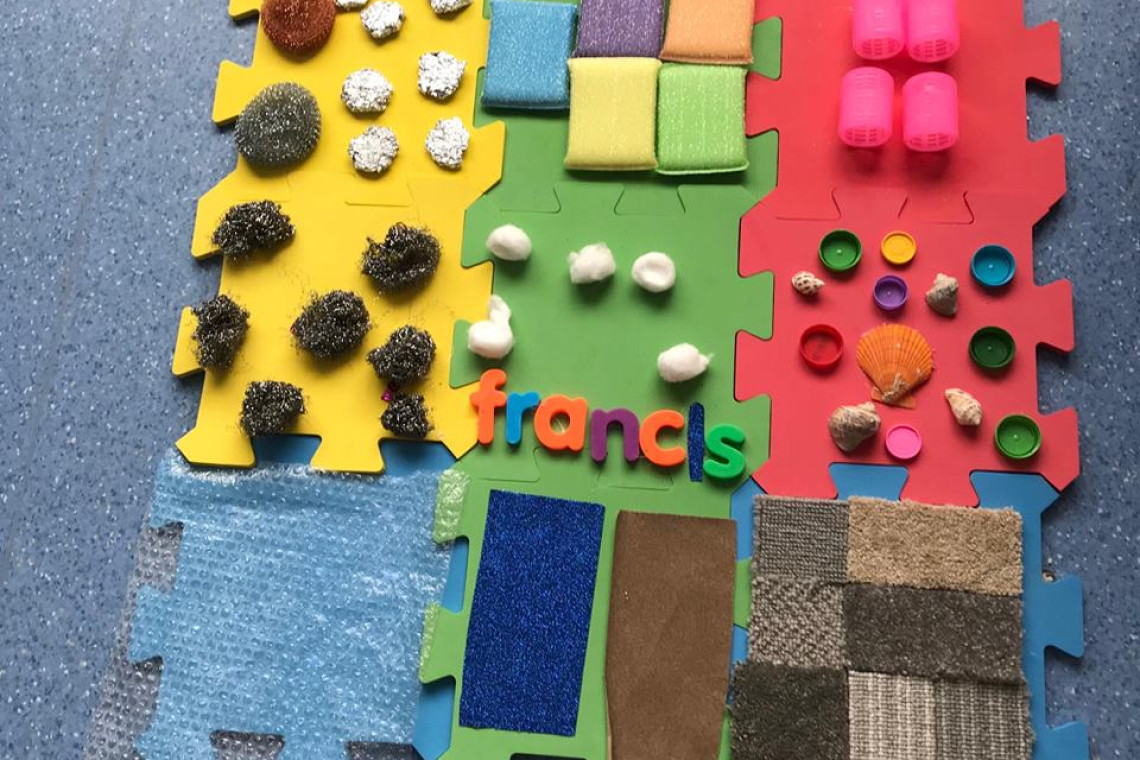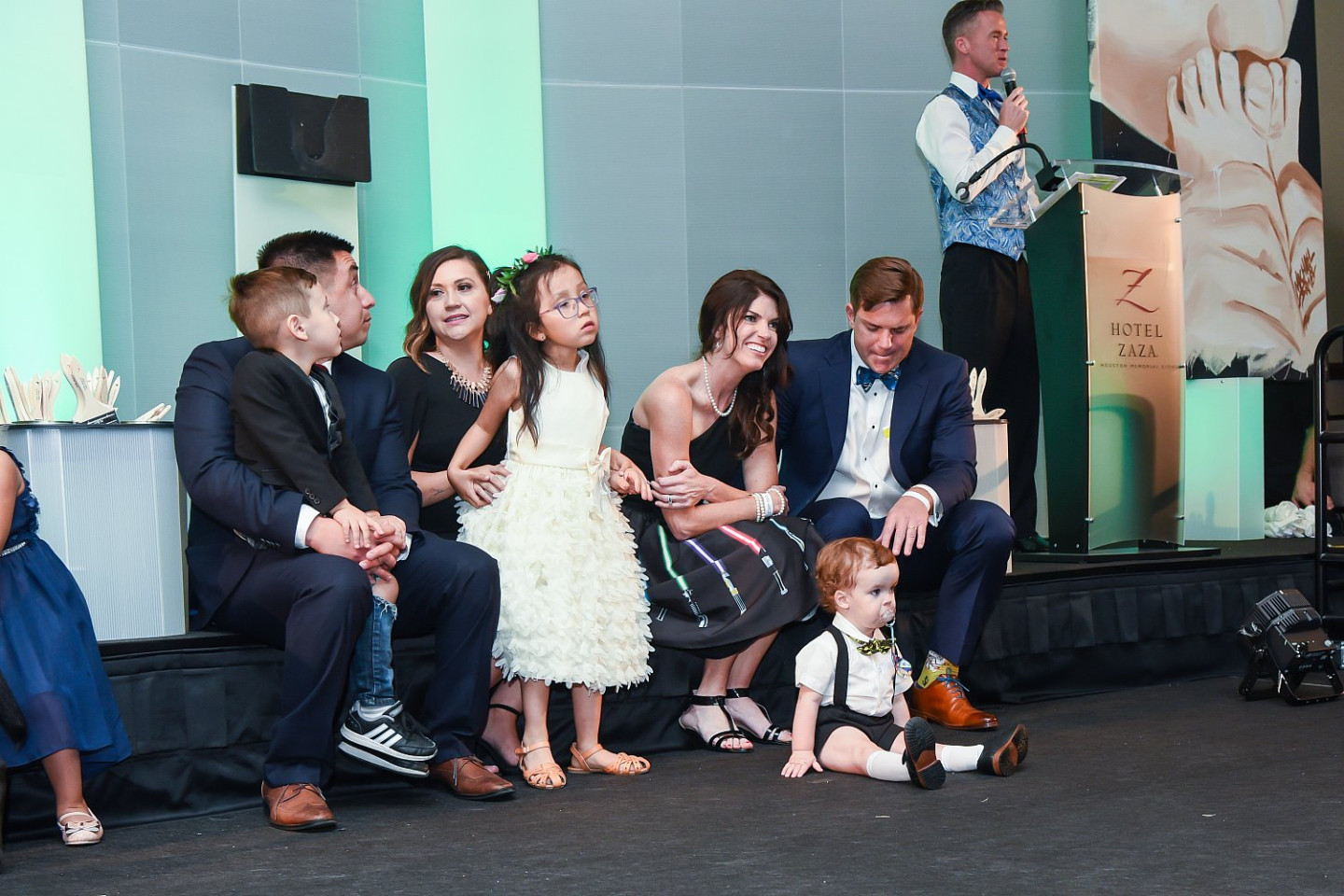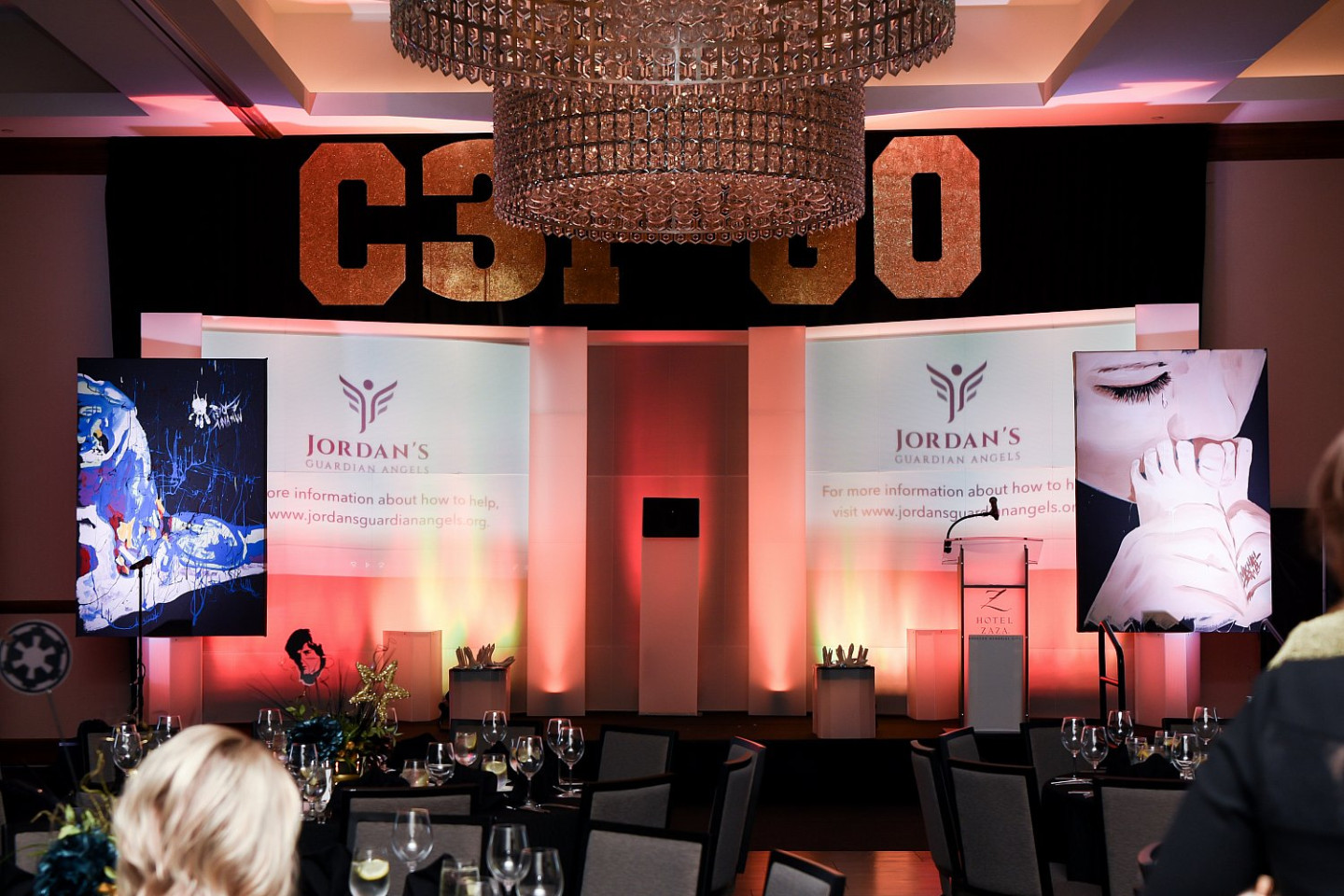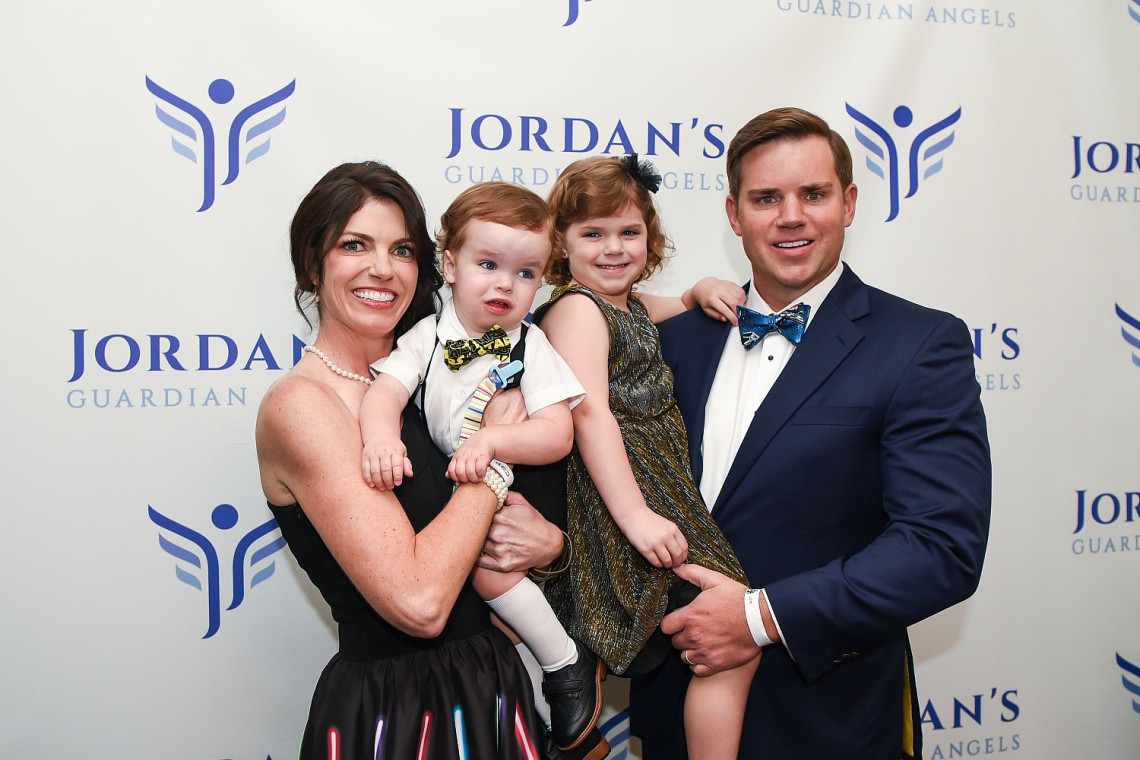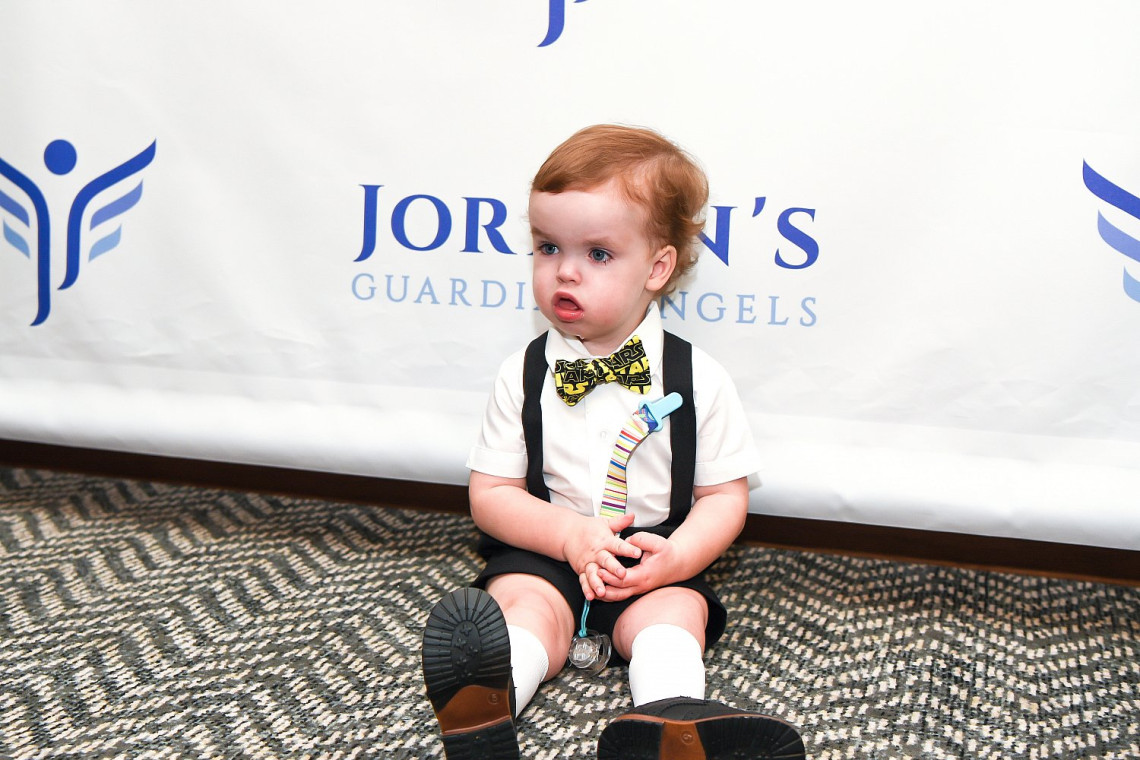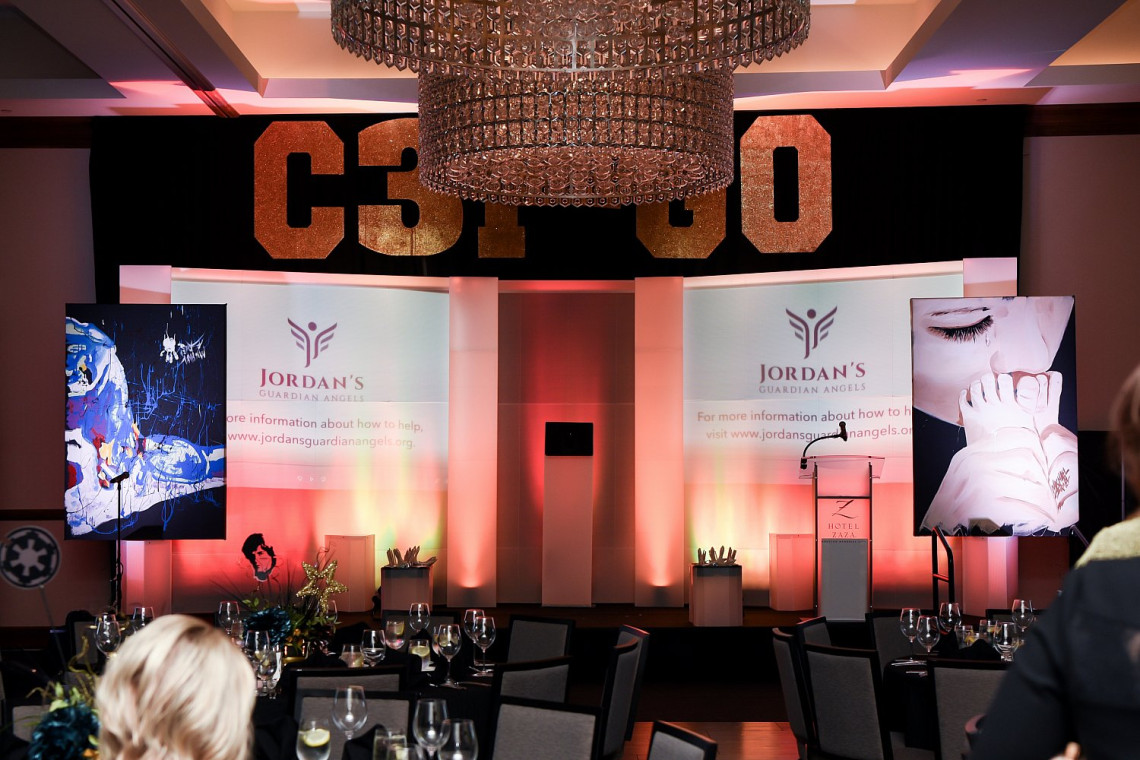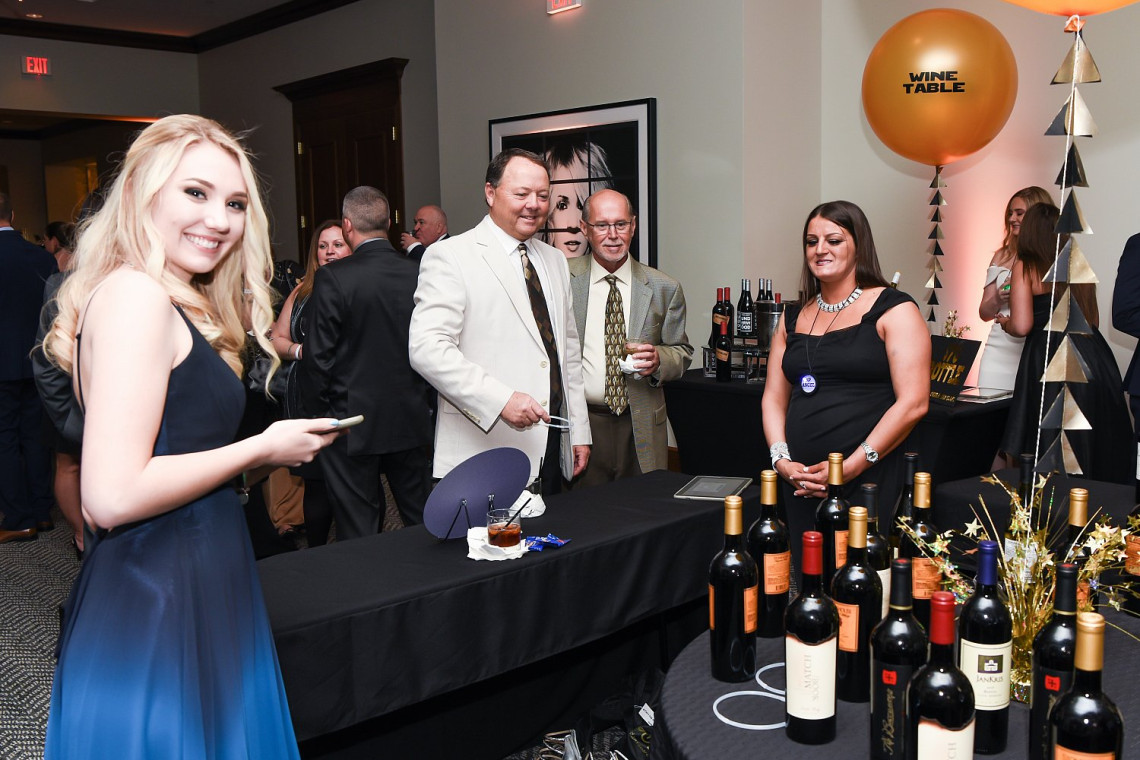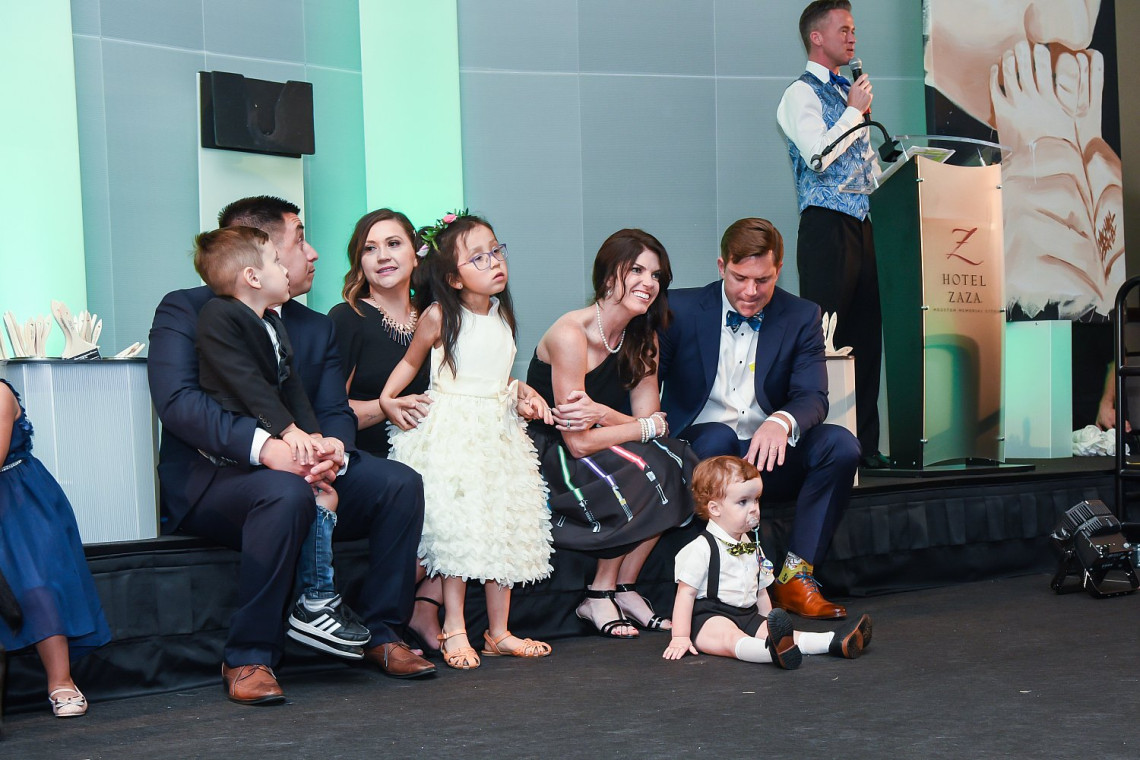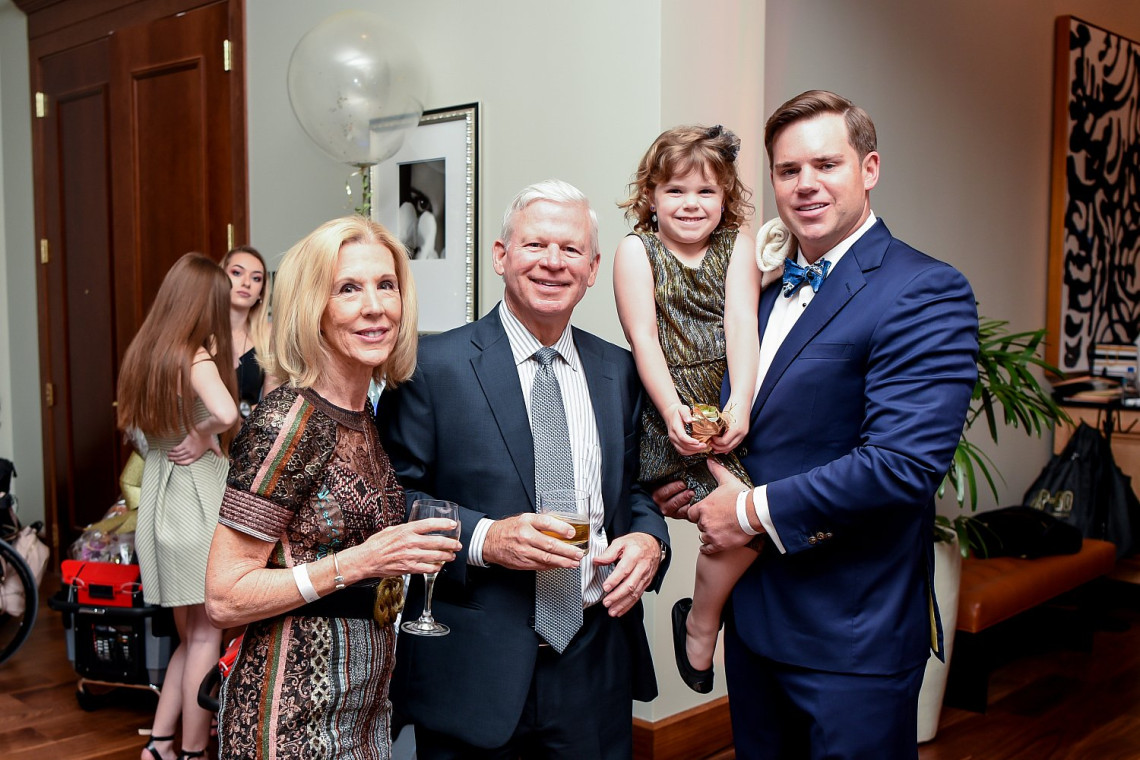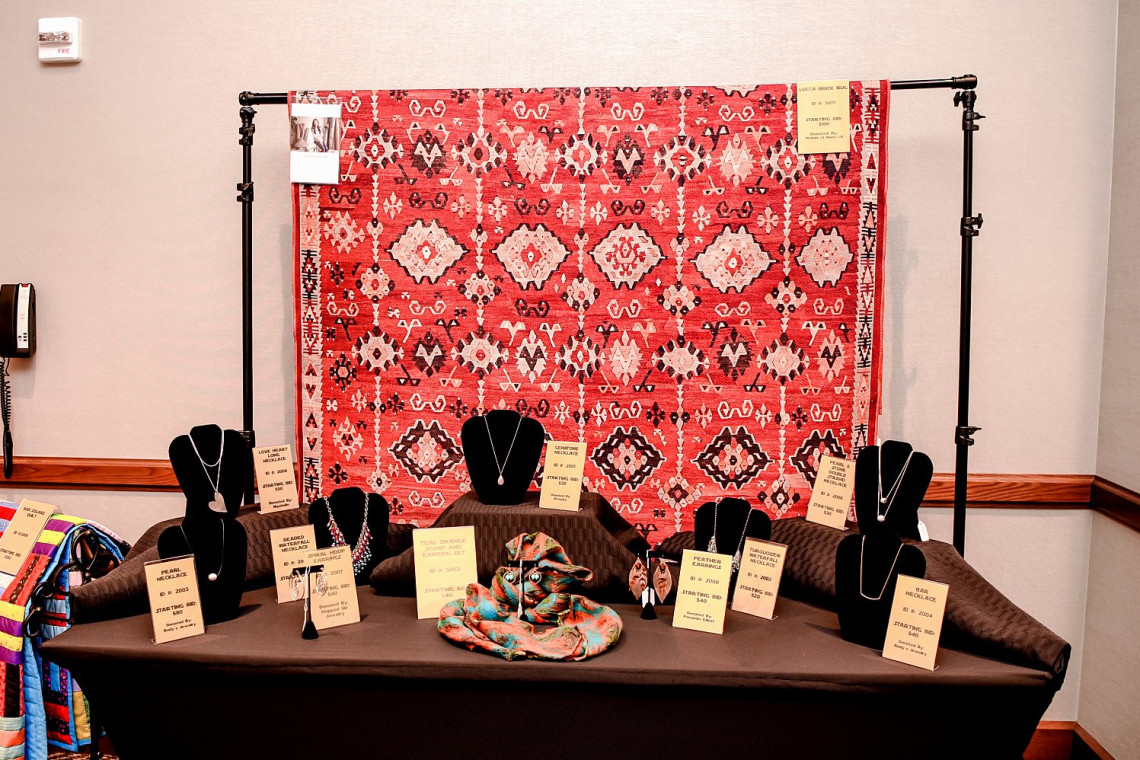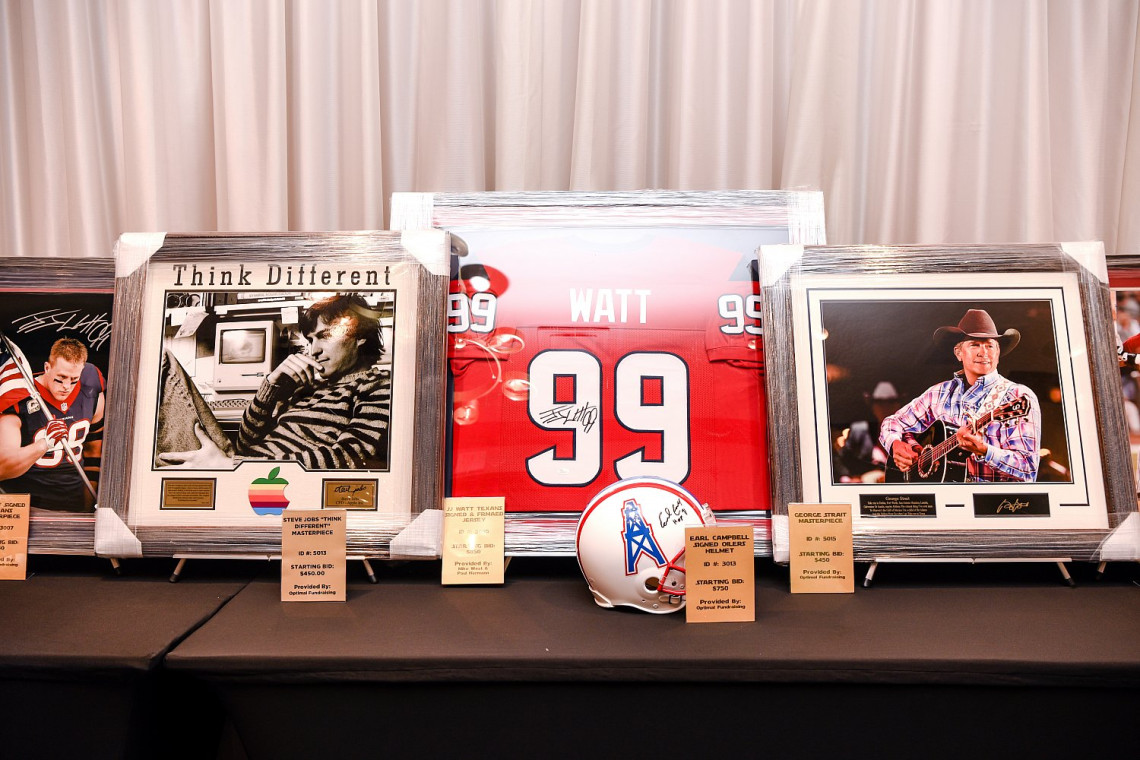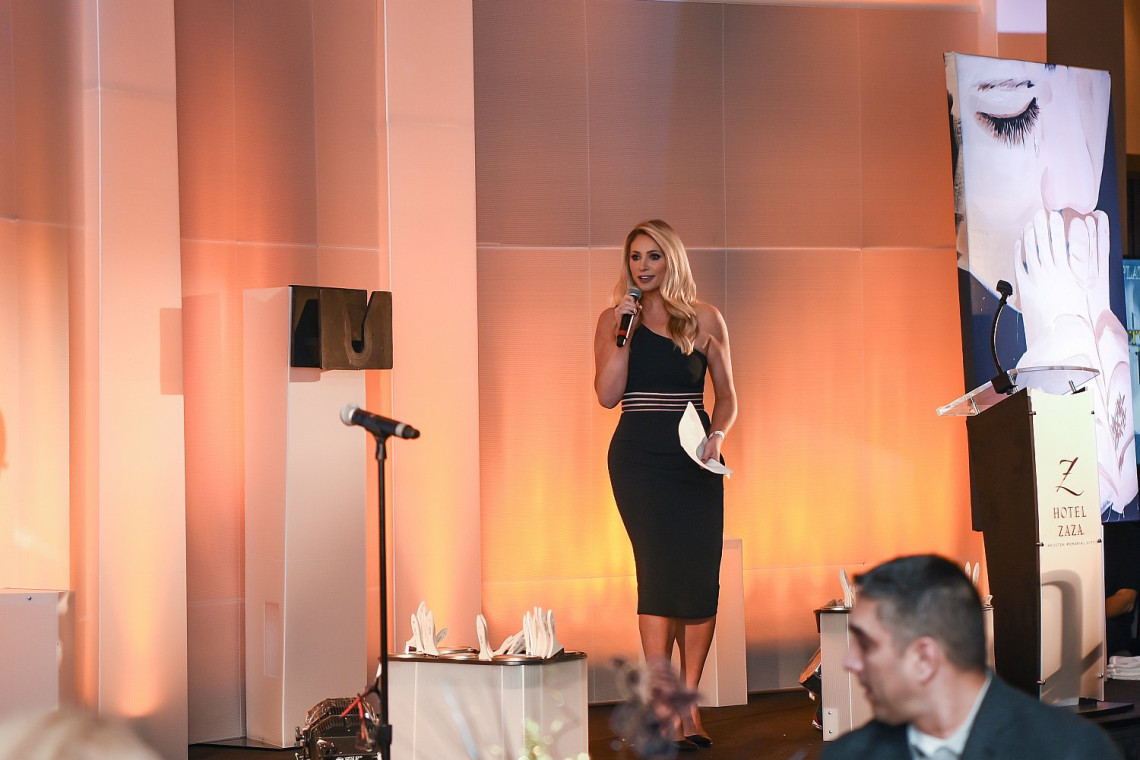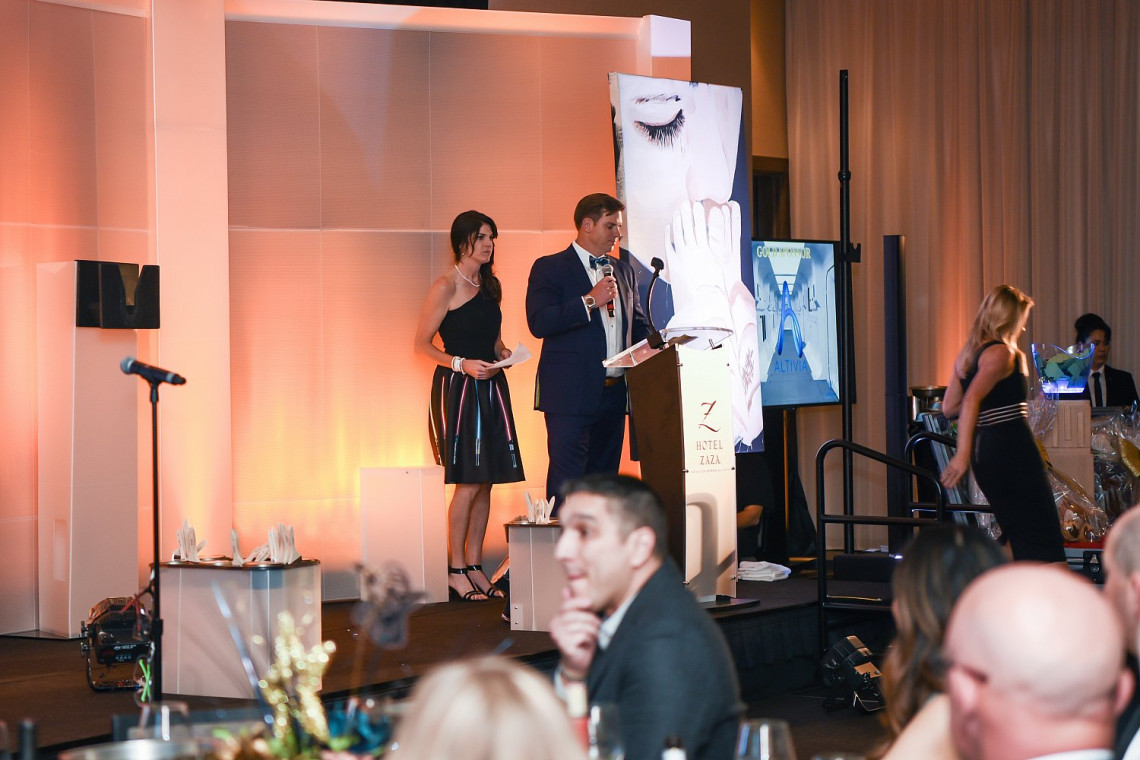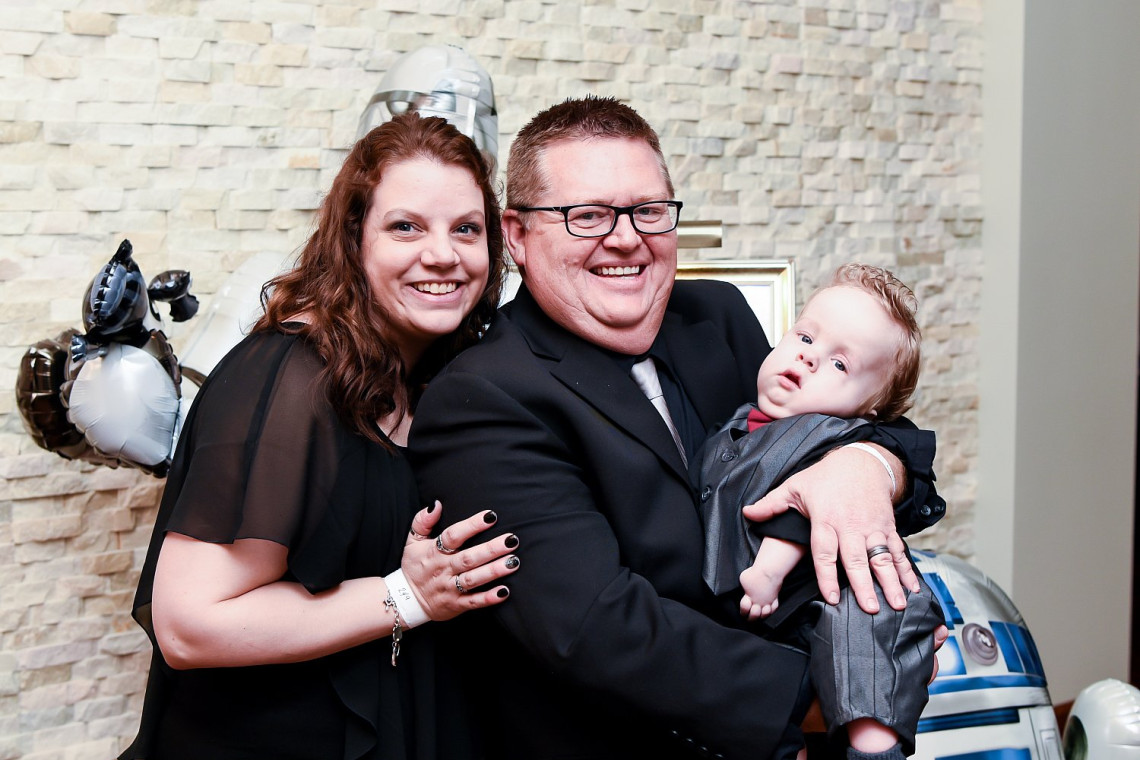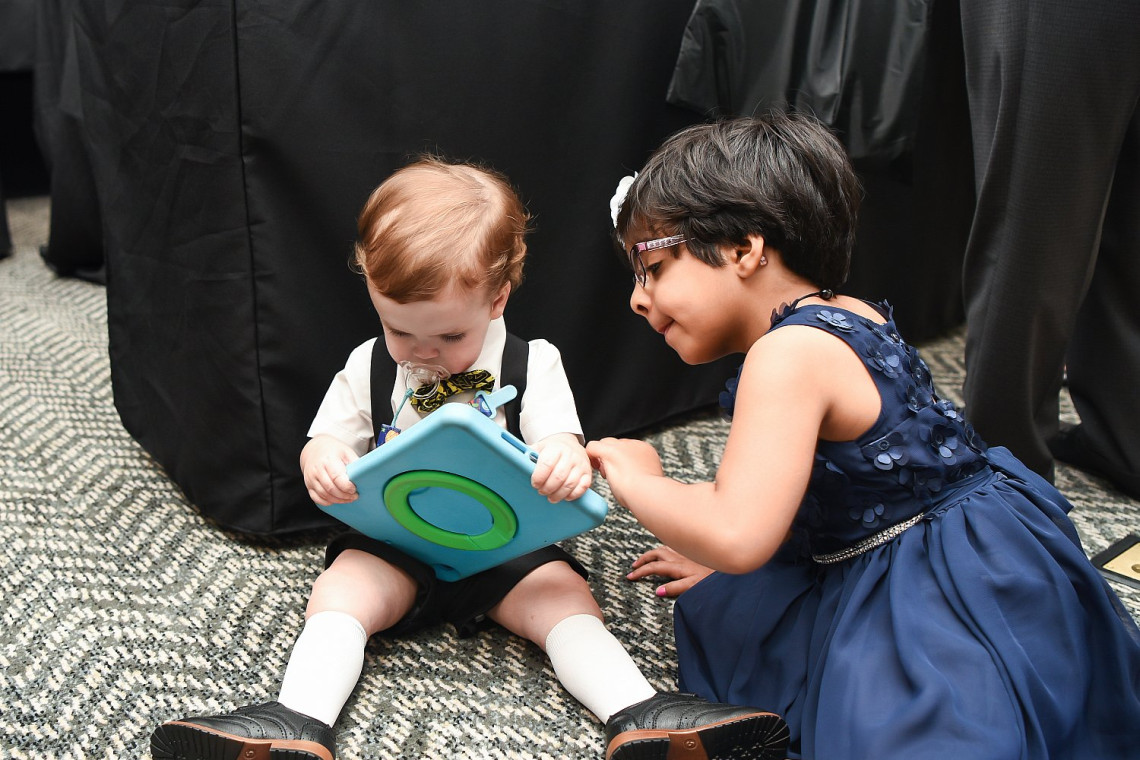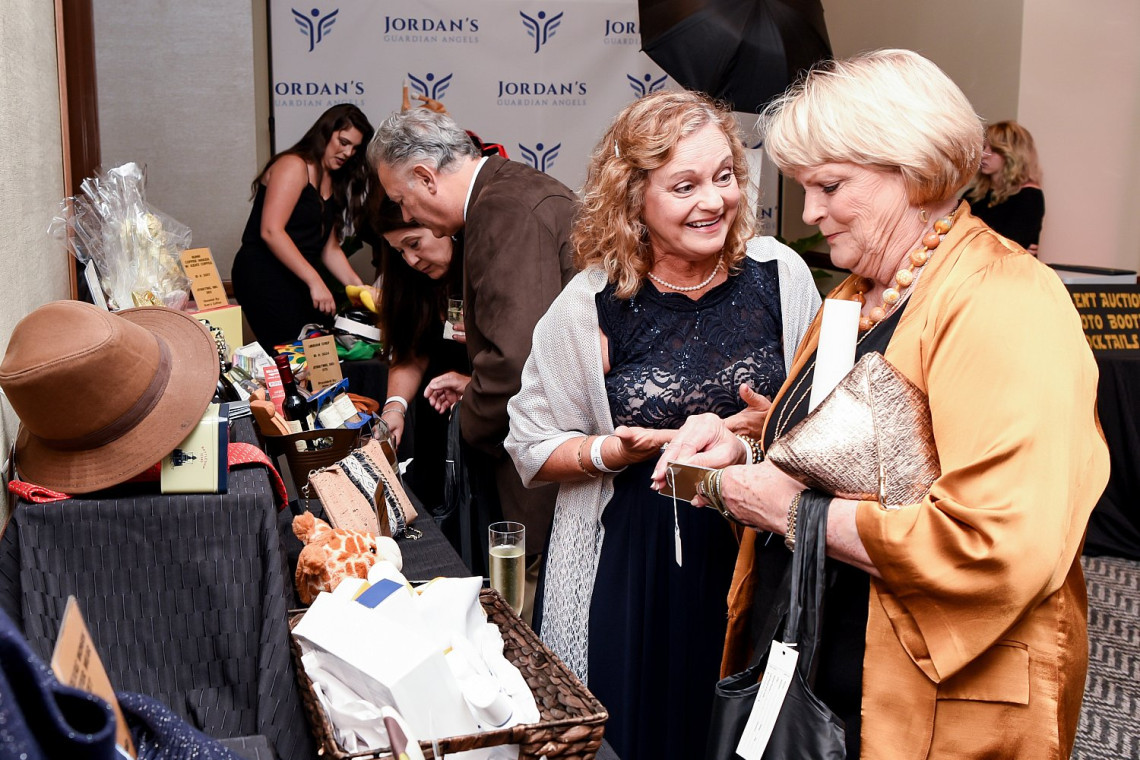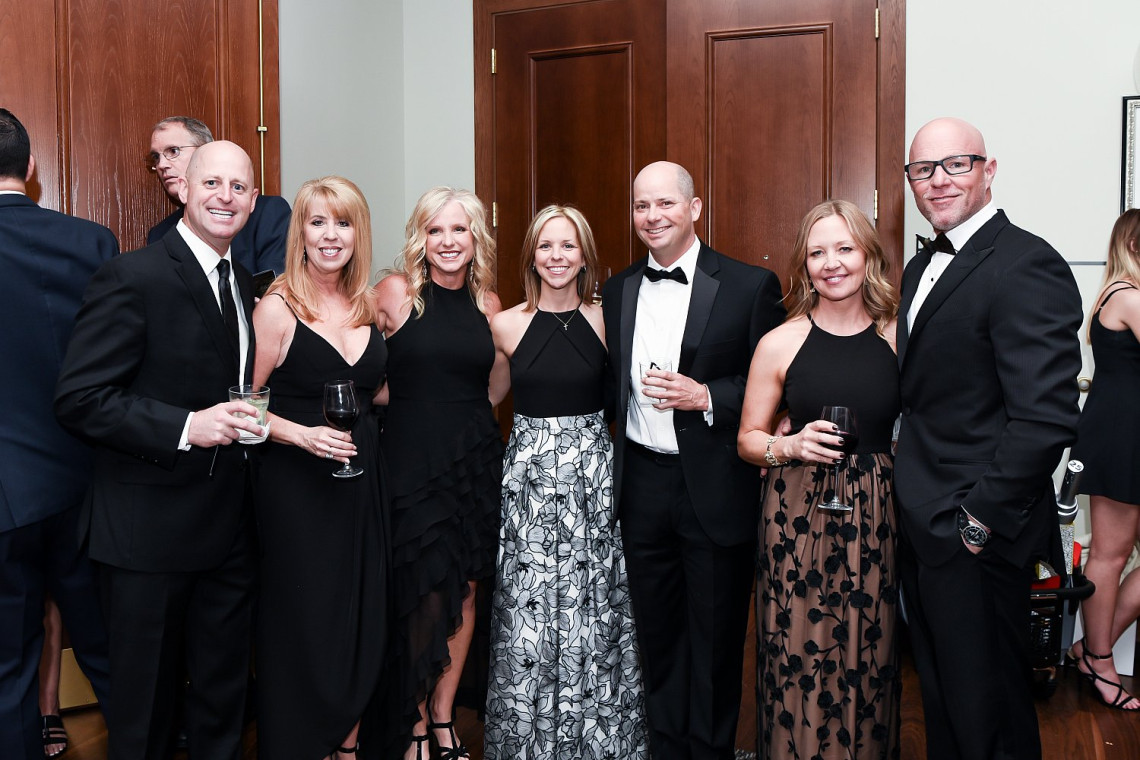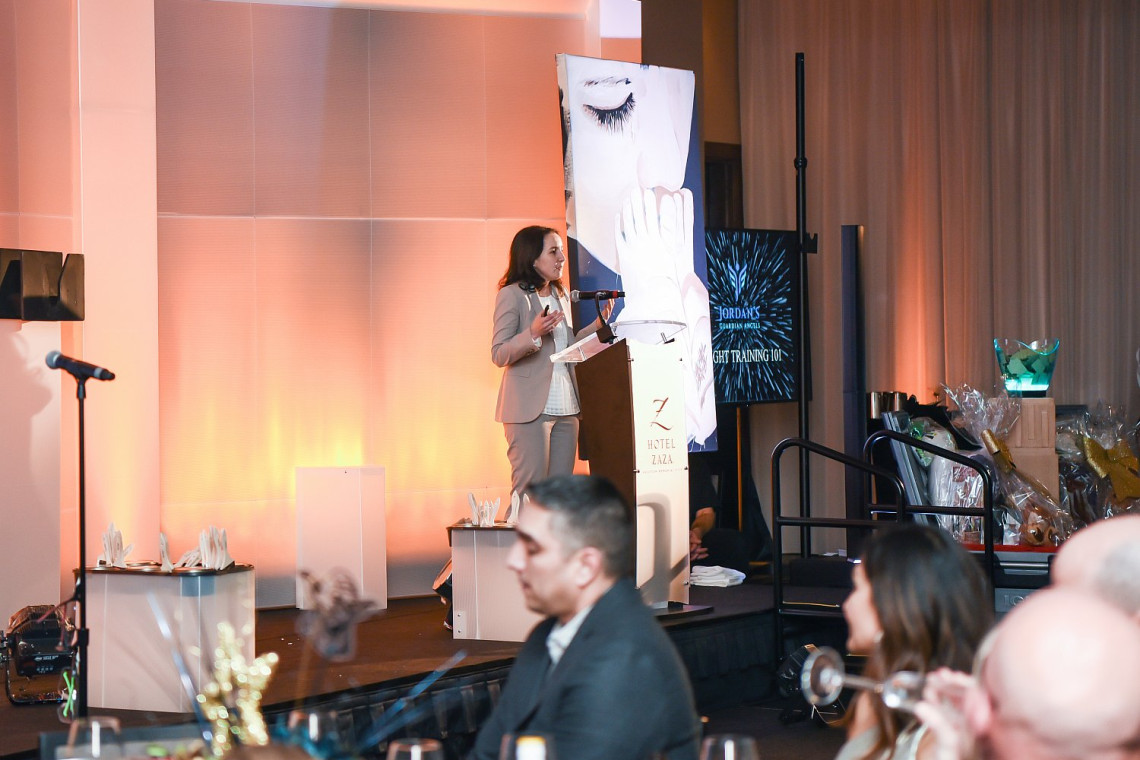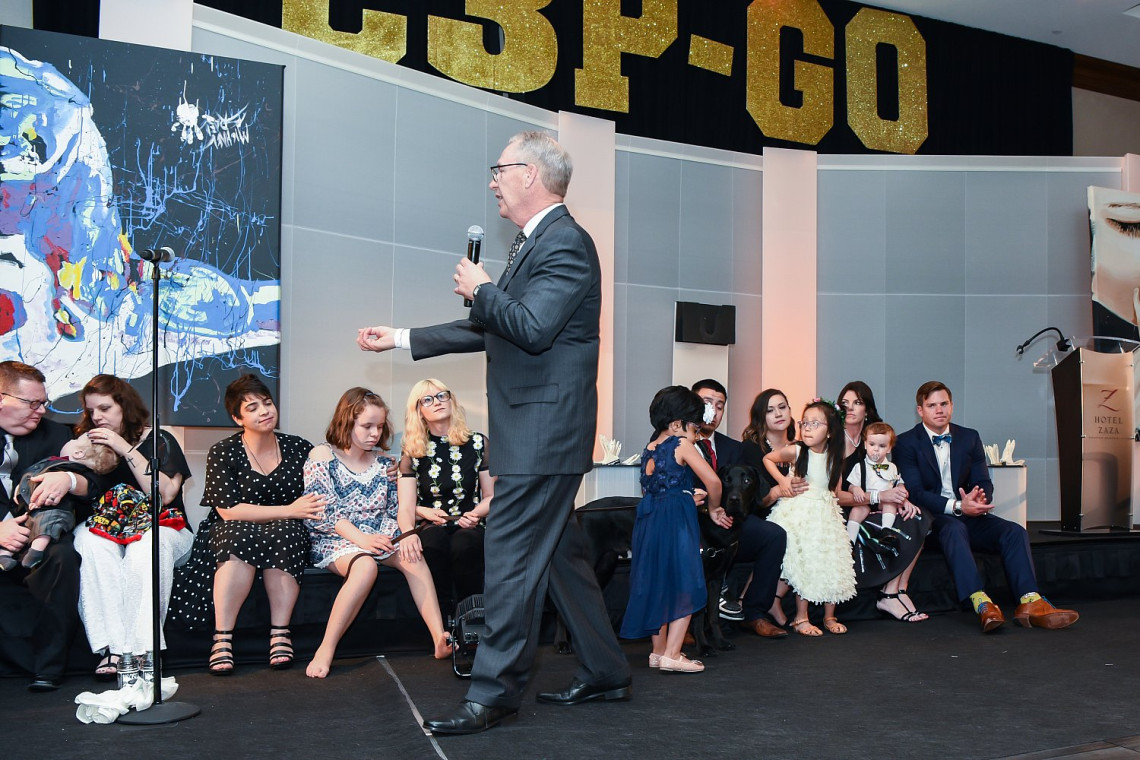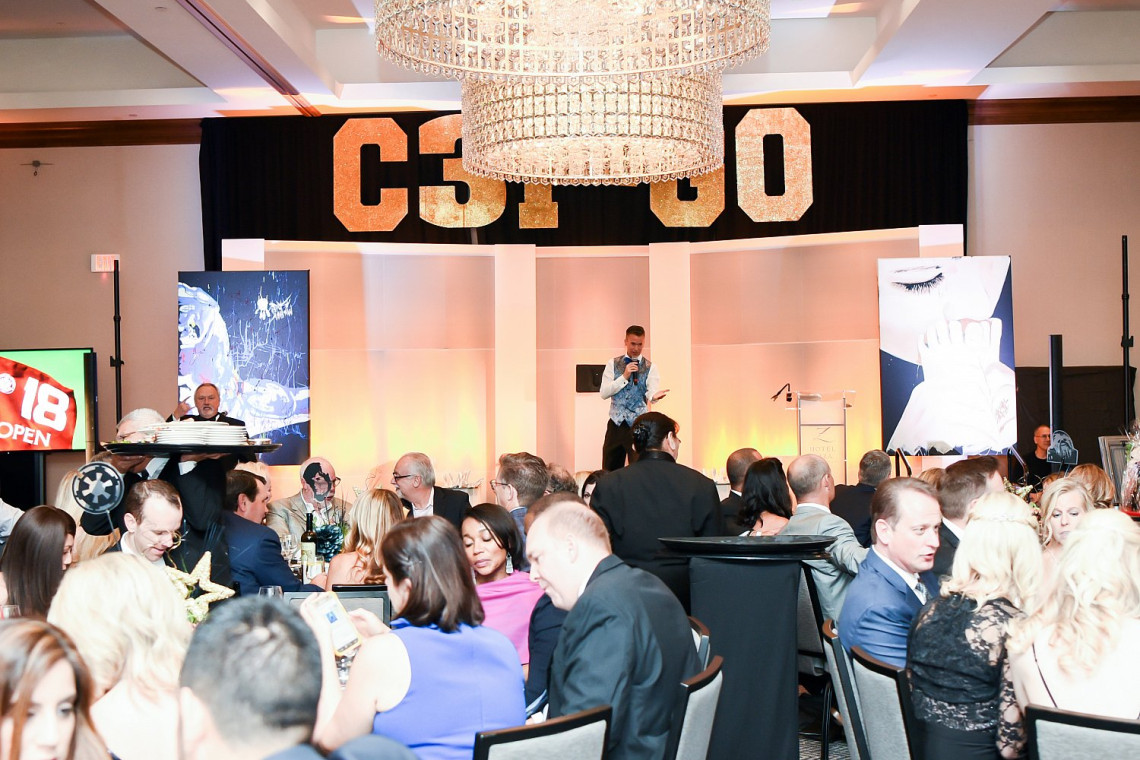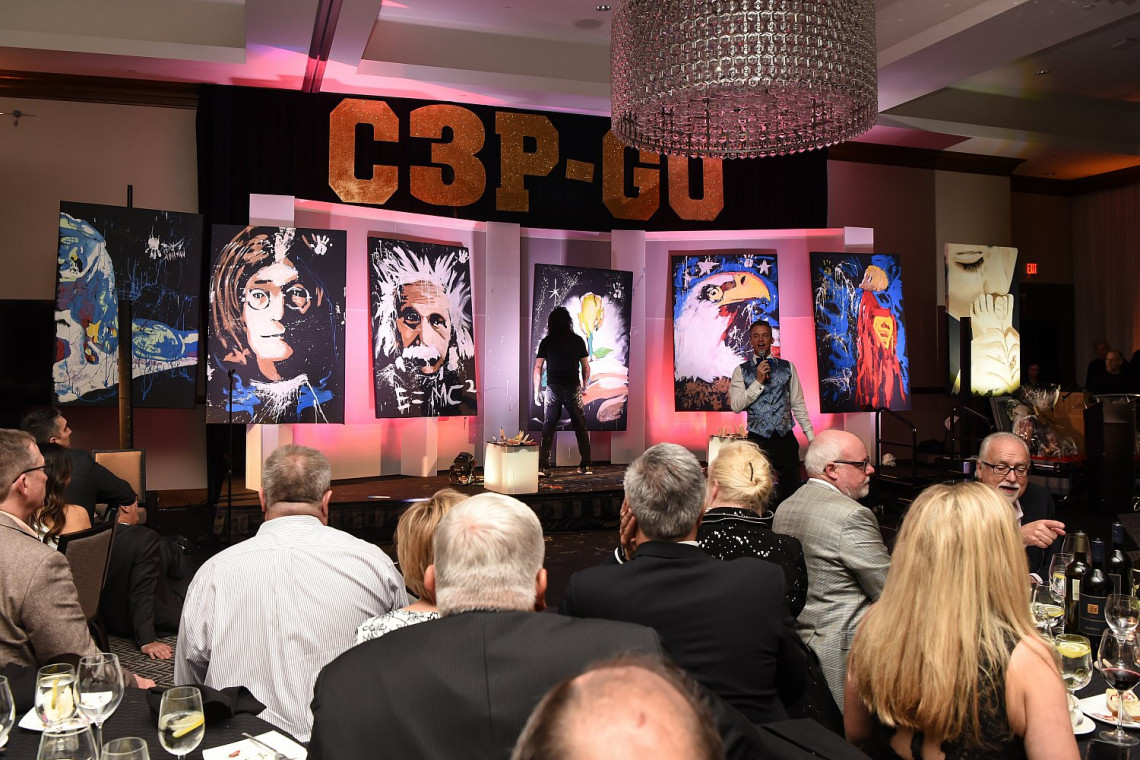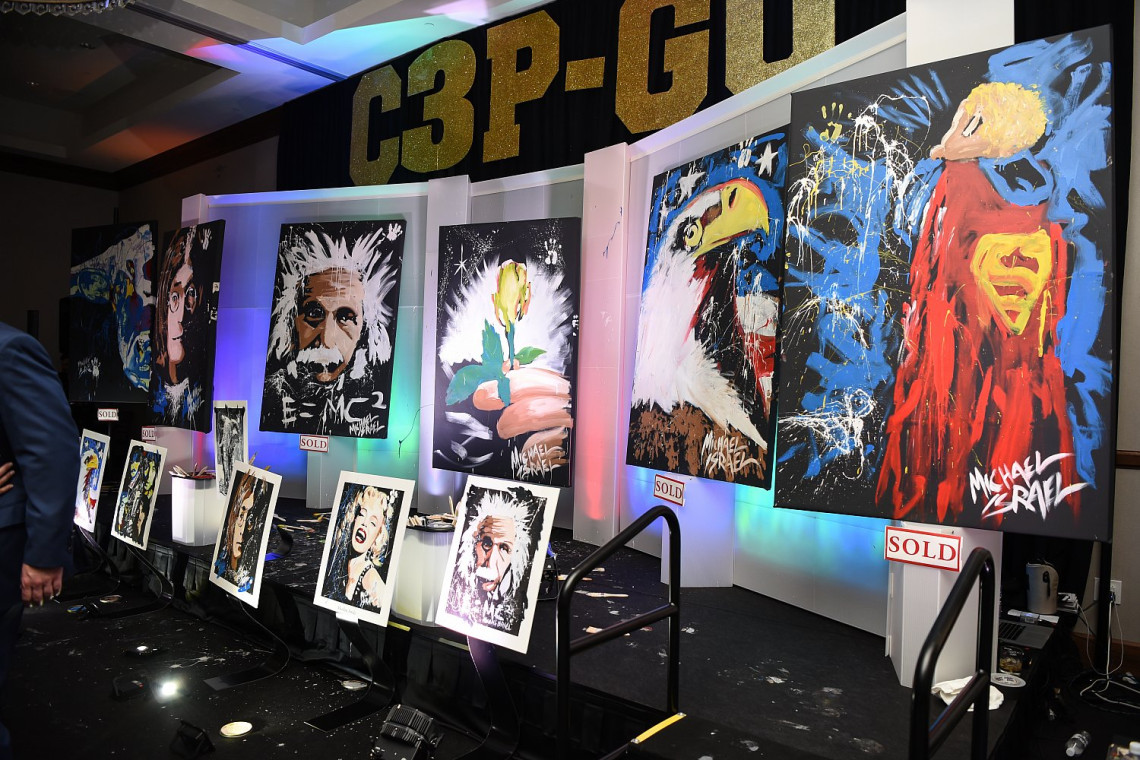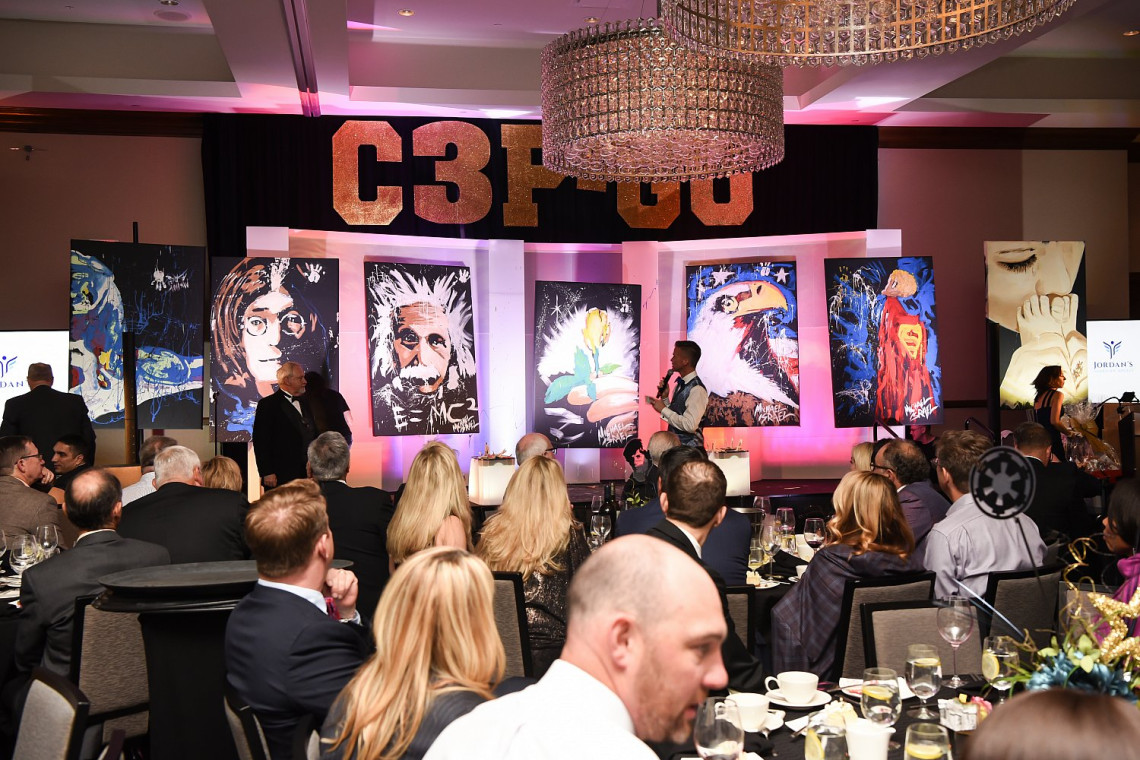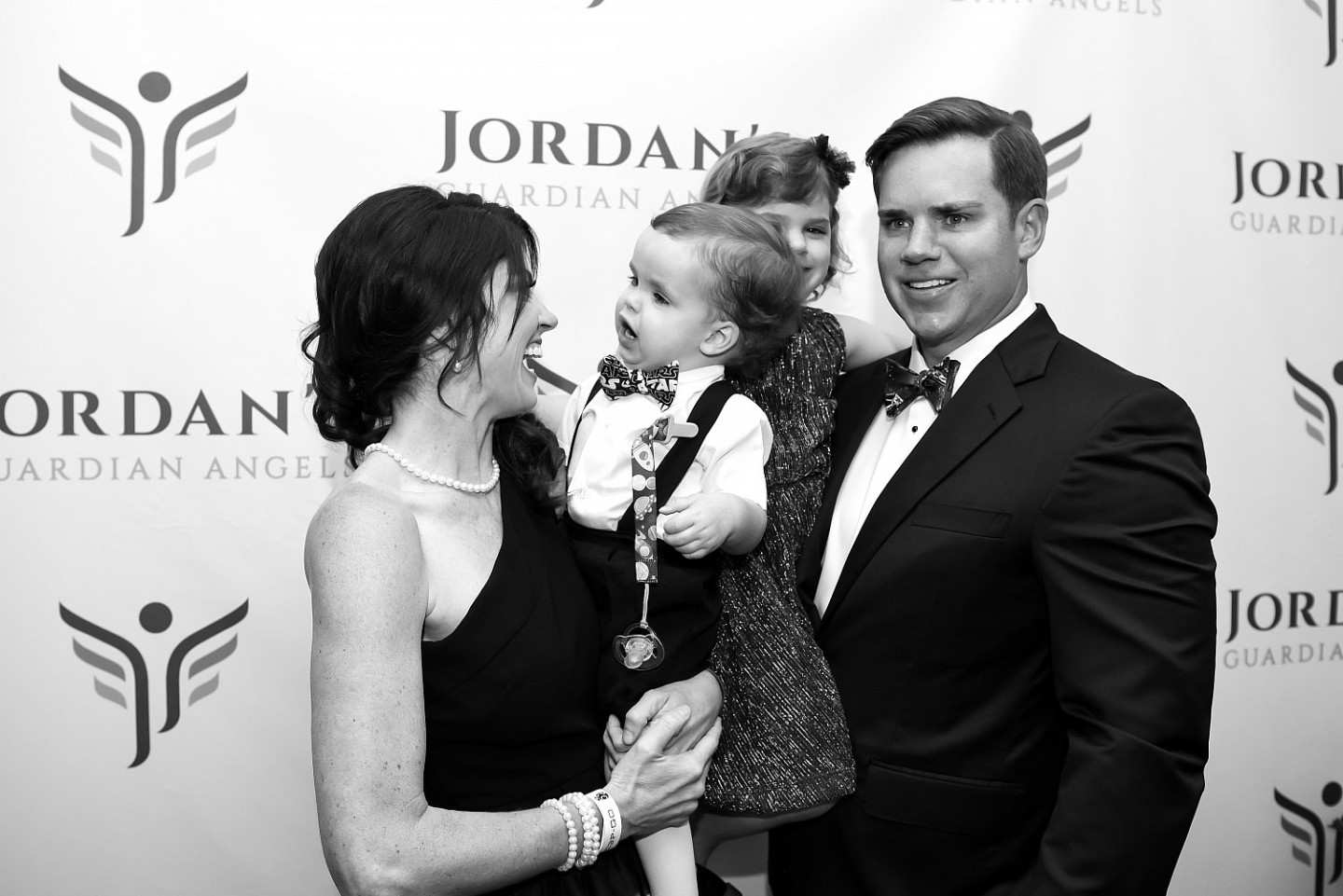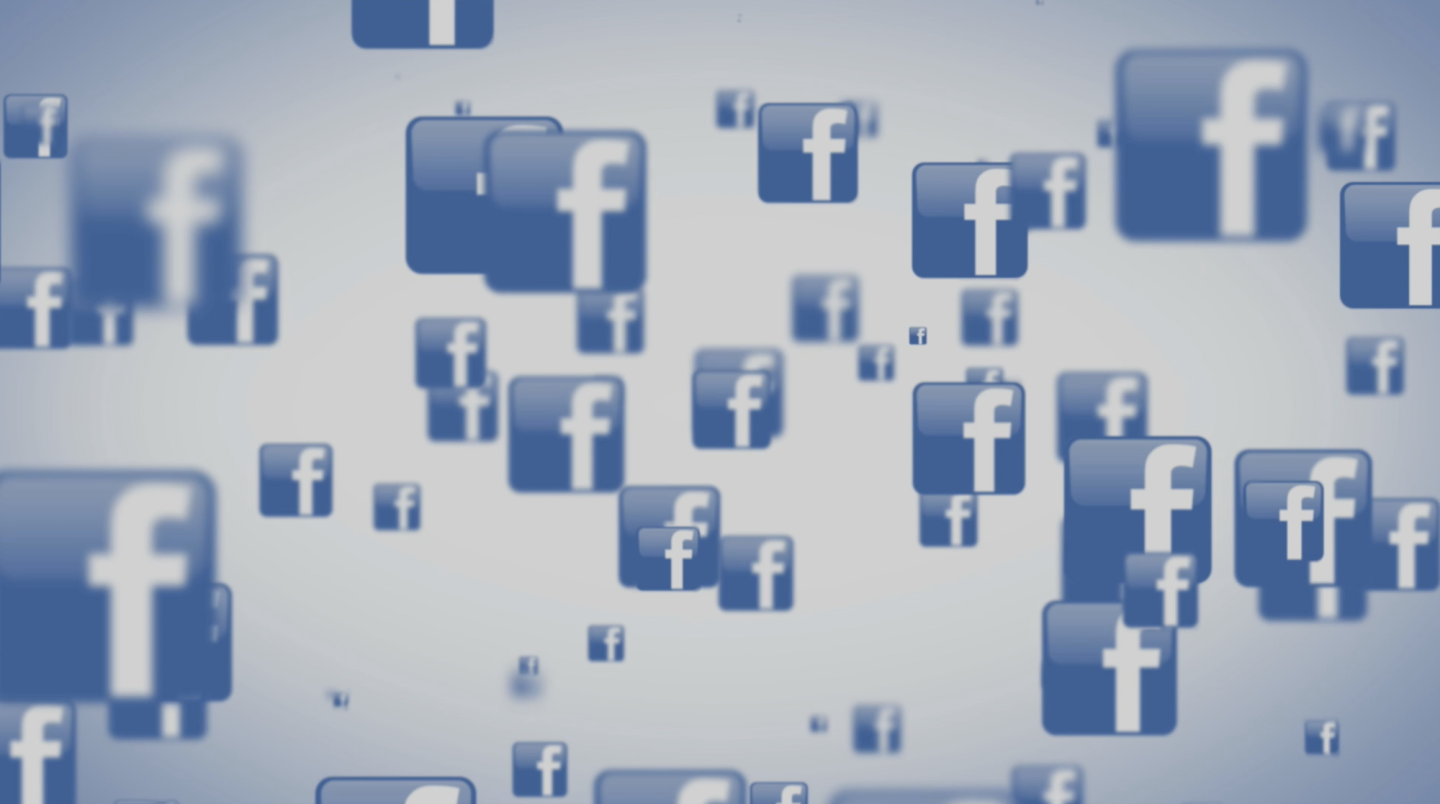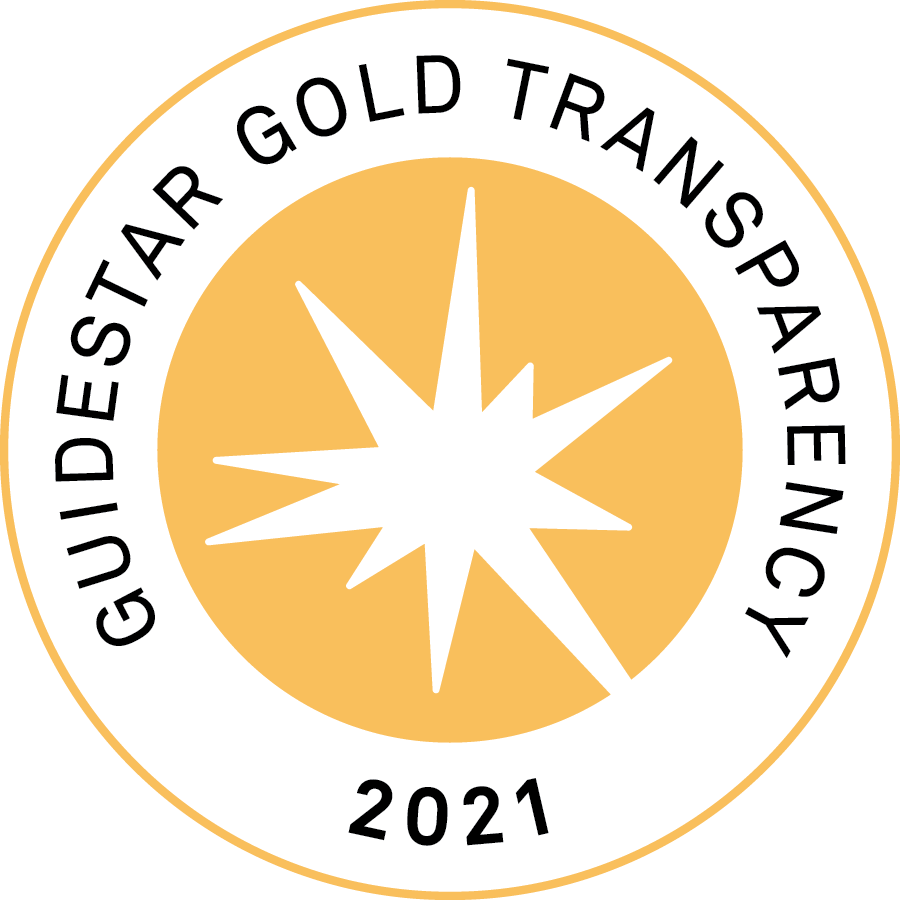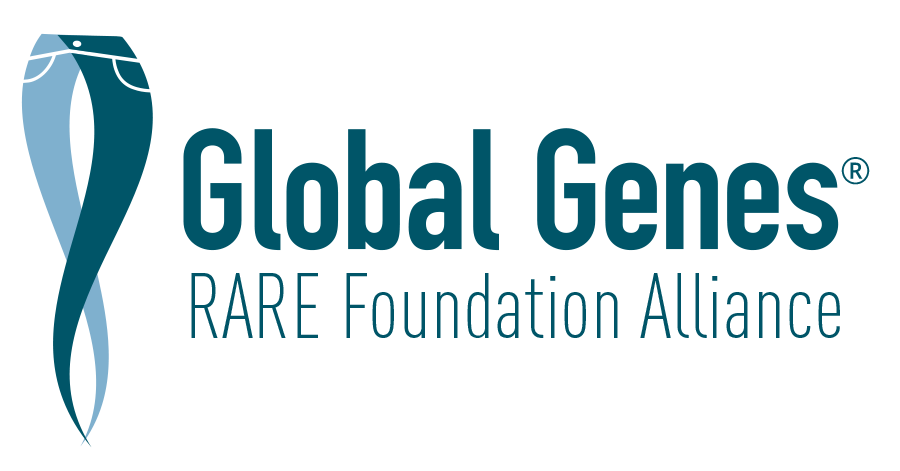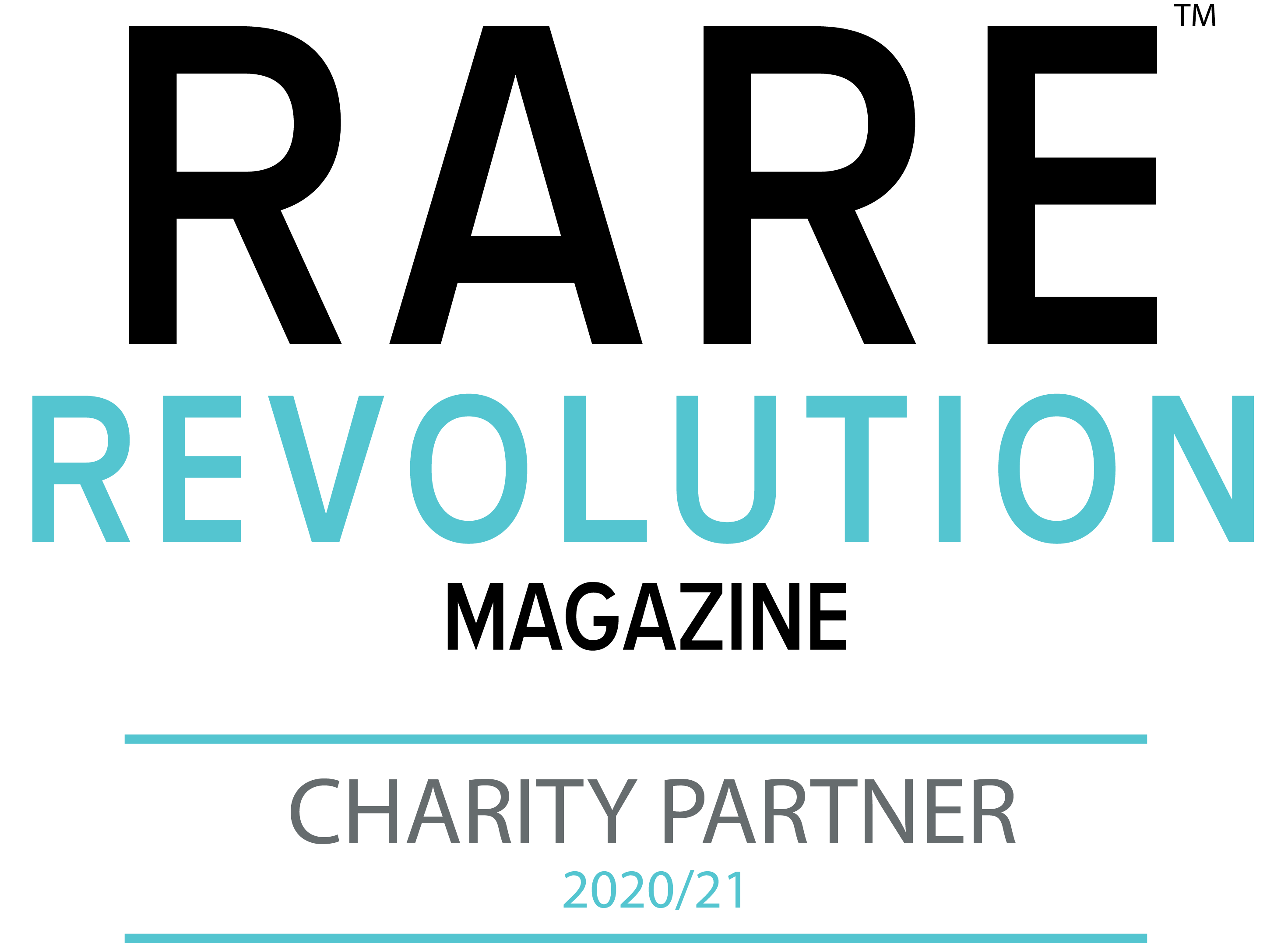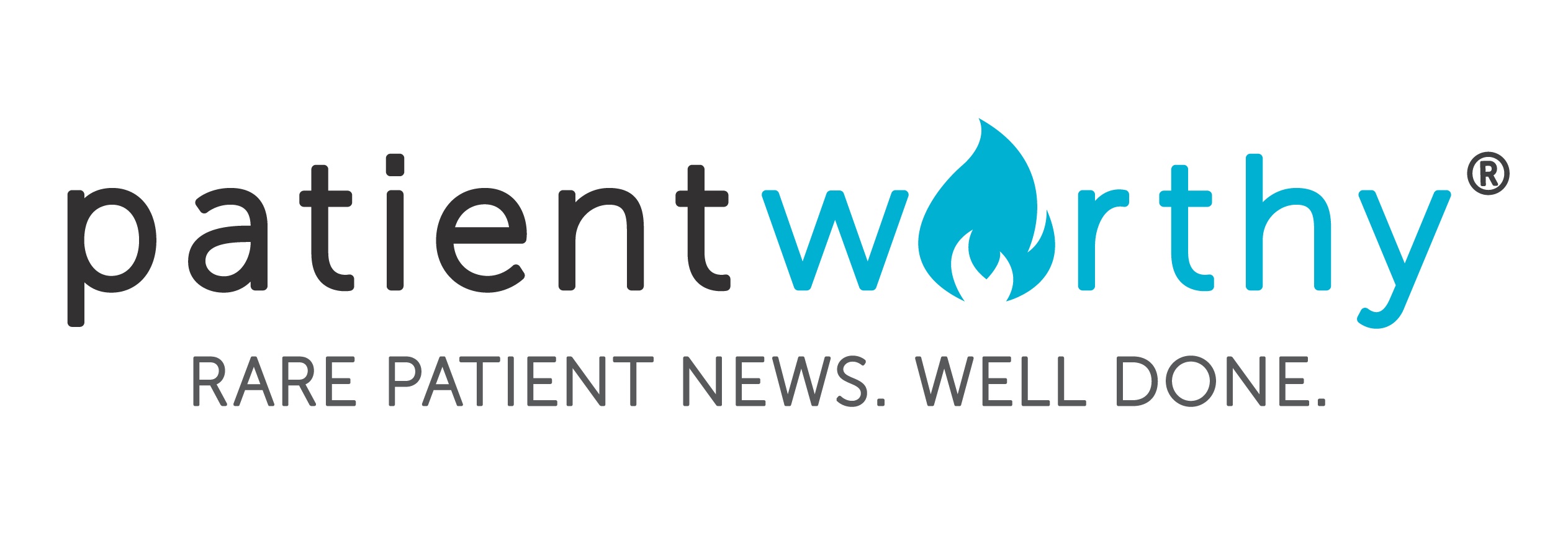Under brilliant blue skies, dozens hit the links in South Lake Tahoe for a good course: raising money to help Jordan’s Guardian Angels cure Jordan’s Syndrome, a recently-identified mutation on the gene PPP2R5D. And – it was an incredible success. Thanks to more than 80 sponsors and guests, the second annual Golden State Classic at Edgewood Tahoe raised more than $270,000!
We decided to add a little sizzle and fun to cocktail Party on Thursday night, so we created a $1 million hole-in-one contest. That’s right – 15 lucky sponsors were chosen out of the attendees to take a swing for $1 million dollars. One by one, they took their swings on the ninth hole, but wind coming in off the lake made for difficult conditions. We all had a great time watching them try their best!
Then, guests were treated to an update on our promising research progress, featuring a short video and an in-person discussion with Kyle Fink, Ph.D., from the UC Davis Institute of Regenerative Cures. Attendees learned first-hand about recent breakthroughs that show Jordan’s Syndrome is reversible.Watch the video below!
Then, it was time to swing for charity on a picture-perfect Friday morning. You may remember that golf was canceled last year due to unseasonal September snow, but this year, the fairways were pristine, it was 83 degrees, and we were back to making birdies instead of snow angels.
Matt Back and Terry Brennand tied for the GSC Angles Cup with 79’s. Matt Back won the Angles Cup Trophy in a playoff!
We want to thank our presenting sponsor, Norwood Associates, and our major sponsors, Altria, California Independent Voter Project, District Council 16 International Union of Painters & Allied Trades, and Walmart.
We also want to take a moment to appreciate our supporting sponsors: Aaron Read & Associates, American Beverage Association, Amgen, Boehringer-Ingelheim, BBC Public Affairs, Bob & Sara Giroux, Brandenberg Group, Buena Vista Construction, California Cable & Telecommunications Association, Capitol Alliance, Carter Wetch & Associates, California Beer & Beverage Distributors, CSEA, DaVita, Fanslau Government Affairs, Farmers Insurance Group, Fernandez Government Solutions, Five Star Bank, George & Wendy Miller, Larisa Cespedes, McHugh, Koepke & Associates, SEIU – Statewide, Sloat Higgins Jensen & Associates, Sycuan Band of the Kumeyaay Nation, Southern California Painters & Allied Trades – District Council 36, Uber, Villines Group, and Wayne Ordos, Attorney at Law.
Finally, we want to thank our legislative supporters: Assemblymember Ian Calderon (AD 57), Senator Anthony Cannella (SD 12), Assemblymember Heath Flora (AD 2), Assemblymember Adam Gray (AD 21), Senator Richard Pan (SD 6), and Assemblymember Phil Ting (AD 19).
It goes without saying, but we can’t continue our mission to cure Jordan’s Syndrome without each of your support. On behalf of Jordan’s Guardian Angels and our families around the world who will directly feel the impact of this inspiring generosity, thank you!!!

